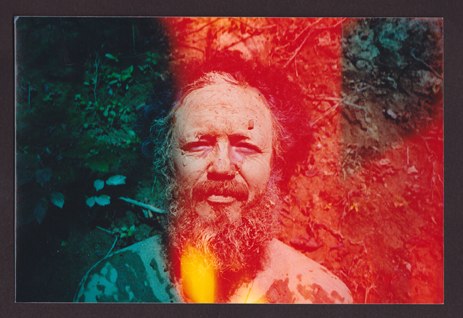

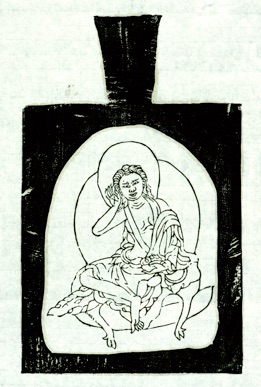
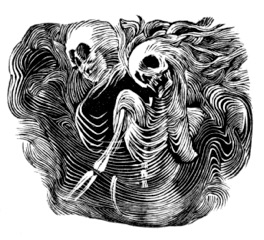
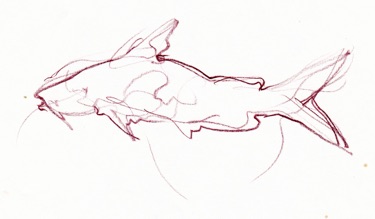



Discussion of breatharianism would be incomplete without some sort of introductory historical overview. So let us consult some books of the ancients – here depicted to our left and embalmed by my own honey bees. Slip back with me into the mists of time and into the musty, enticing pages of yore, as we launch this voyage into terra incognita, having a look into that ancient lineage of kindred souls who’ve come before us.
That’s now been over four years.
For many, that may be hard to swallow, but what I am doing is also less radical than you might think. I still have nutritional and energetic needs, but I meet those needs otherwise than by eating. Sunshine and fresh air help, as do meditation and contact with both earth and water, but it is ultimately the very life force itself, suffusing everything – beyond time and place – which sustains me.
And that, my friends, is the point of this exercise – turning away from food long enough to allow the body to make its transition to the primal source of life and thus moving past my limitations into a more open and generous way of living.
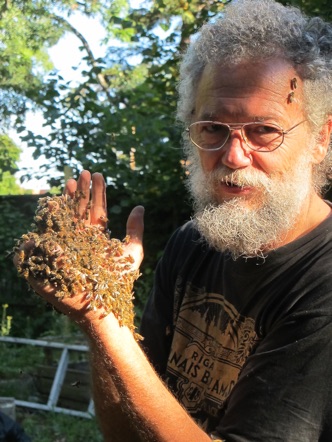
Living from Light
Testament of Ladislav R. Hanka
on Life as a Breatharian/Pranarian/Inediate
June 13, 2019
Me and my girls - honey bees. I am admittedly thin –
but hardly cadaverous
This writing is intended for you – to assure you that it is possible to simply live from Prana without consuming ordinary food, though it may seem on the surface, to be implausible. We who do this today, are among the first swallows returning after a long winter, finding the way home and leaving a map for others to follow. This practice may someday be for the many or it may perhaps always be limited to the few who are called – but it is real and if you’ll just stay with me, you’ll see that there is evidence, based in sound science, that makes this seem no longer outrageous or beyond the realms of the believable.
If you are like me, you will already have been mining the available sources for every last bit of useful information and weighing its veracity. You need to see sensible people speaking in a measured, thoughtful way about something this far from the well-established human norms. The person testifying needs to be real and to be telling you about their own choices and actual practice within society, rather than an avatar living up high on Mount Olympus with an enviable but unattainable life-style, preaching to those who must still deal with employment, family and social obligations. Their story needs to be believable and you need to see them apparently leading a life that includes some rigor – yes, by all means – but above all else, living compassionately and with a healthy mix of ideals and critical thinking as well as good old common sense. The example of who is addressing you must be at least as compelling as is the weight of the purported evidence being presented.
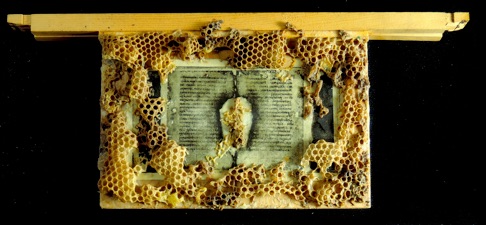
What we choose to call this practice is not so important, but differentiating it from pathological psychologies such as anorexia, bulimia or even simple starvation is. This isn’t merely a matter of obfuscation or political correctness – renaming something problematic with a less negative sounding expression. Naming something makes it yours and brings the discussion back into your own more sympathetic court – displacing adversarial and dogmatic argumentation with polite and thoughtful discourse. Words help us understand the world. In the process of naming new phenomena or subsets of the familiar, we end up teasing apart shades of meaning as we look for ways to more accurately describe that which no longer fits comfortably into one single concept or expression. Contemplating breatharianism, we need to have some confidence that we’re engaging with clear-eyed reason in something potentially ennobling and taking a step forward in our development rather than just coquetting with plain old fasting – becoming in due course, starvation. People before us have confronted these issues and developed ways of thinking and speaking about them, which are based in experience and intelligent analyses.
Fasting isn’t stepping off a cliff with irrevocable repercussions. You can take a step back, if that proves necessary, and simply begin eating again. There does however, come a point of no return in the physical degradation attending the starvation process and one needs to be aware of this. There are plenty of warning signs and one must pay attention to them, using one’s God-given reason and be aware of what is taking place within his or her body. Still, the experience of those who’ve gone before helps allay one’s trepidations of how the process ought to be taking place.
A brief historical overview of the Origins of Breatharianism
Those very Tibetans have, for instance, a tradition of saints and realized Bodhisattvas having within their anatomy ‘heart crystals’. When these extraordinary individuals die, they are cremated and their ashes carefully sifted in search of these crystals, which are among the signs that are taken to demonstrate that a monk was indeed of such high spiritual attainment. Collections of these crystals exist and occasionally go on tour. I have seen them all duly documented and labeled as to whom they were found in – where and when. They are modest little stones in pinks and yellow – often even colorless, but not flashy or large as one might suspect if a fabricated public show were the point. Why would such a phenomenon occur only there and why are there no mentions of crystallized masses being found occasionally within the cardiac tissues of the deceased in the extensive annals of western medicine? I have no answer, much as I have no mechanism of action to offer for living without eating – just that it seems to be so. There are many things between heaven and earth for which we cannot account – mysterious and enticing. Thank God for the beauty of it all – for the mystery – for those indicators that it isn’t all just death and taxes.
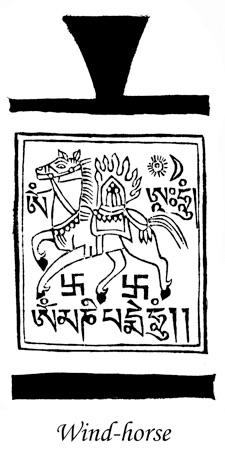
There are yet far more records of inediates from among the saddhus of India as well as the mendicant monks, hermits, and purported immortals said to be living in the high Himalayas. Here it seems that extremes of longevity attract little attention – and long-term fasting, extensive entombment, and impossible-seeming physical feats don’t surprise people. Milarepa, the 11th century Tibetan saint and sorcerer is recorded as having subsisted on nothing more than tea made from stinging nettles in the decade he lived in a cave – leading his skin to turn green with a waxy covering and hence the greenish color he is often depicted as having in paintings and sculpture. I do wonder sometimes, about the accuracy of details in an oral transmission chain that is nearly a millennium old. Then again, many things from the ancient prophecies and writings of different cultures sound far-fetched, but do turn out to be real. The chlorophyl that Milarepa was ingesting from his diet of nettles may well have helped him take in energy through his skin. You will encounter evidence for that very metabolic pathway later in this text.
There have been other purported and speculative inediates from the
more esoteric western traditions as well. They are the figures of legend,
about whom little is known and even less is verifiable – typically said to
have been long-lived, often with peculiar behavioral traits, who kept to
themselves, who wouldn’t accept the shaking of hands, hugs, sex or the
touch of others; rarely sleeping or accepting visitors – and especially avoiding
those from the office of the Holy Inquisition. Above all else, they were brilliant
and quantum levels beyond the norm. Nicola Tesla comes to mind, as do Paracelsus, Nostradamus, Franz Bardon, Helena Blavatska, Andrija Puharich, John Dee, Gurdjieff, Hermes Trismegistus, Fulcanelli, St Germaine – the many masters of western hermetic teachings who inhabit a mist-shrouded and highly speculative alternative history.
Until recently, western literature on inediates was limited to the occasional Catholic saints who’ve appeared sporadically over nearly two millennia. They tended to live in isolation and often bore stigmata. It has always been seen as a sign of Divine grace – a charisma and thus something special, and not a state to which one aspires. This gift only appears here and there, among those whom
God has chosen.
Beginning with some comforting words about fasting as a phenomenon that is common to most spiritual traditions, I will follow with some sober, clear-eyed words about starvation and caveats about good healthy fasting, leading one into genuine, sustainable, long-term breatharianism. Following that, will come a quick glancing overview of inediates from the ancient world and then we’re at my own experiences – the meat and potatoes of this text (if you’ll forgive me )- based in my own four-year experience as a healthy active person, living an otherwise normal life within society, who receives his nutrient and energy needs from Prana and not the dinner table – and what that all seems to mean. I’ll then be presenting an overview of what seems to be known and proven, while taking care to separate that from mere speculation and will be slowly coming back around to a far less structured and far ranging, even speculative discussion. I will also include something about who I am and what motivates me – my doubts, my occasional backsliding and all else that makes me human and thus believable. You must, after all, in these ill-defined borderline areas of human endeavor, take the measure of the teller as much as what is being said.
Fasting is an integral part of nearly all wisdom teachings and figures prominently at indigenous initiations and vision quests. It is a well-established discipline among anchorites and hermits within the many world religions and is central to nearly all monastic traditions. The prophet Mohamed claimed that prayer can take one half-way to heaven, while fasting will take you to the very gates. He was hardly alone in making similar assertions.
Hundreds of millions of Muslims fast as well - normal working folks with families. They do so from dawn to dusk, during the month of Ramadan. All across India, the many Hindu sects espouse fasting and find substantive spiritual value and physical rewards in the practice, according great respect to those who do it consciously and with discipline. Several Chinese monasteries practice lengthy fasting, called Bigu, that goes well into the range of breatharian practice in conjunction with rigorous programs of martial arts training. Fasting is thus clearly a promoted practice in modern-day religions, even for the common man and is an encoded recognition of the value in exercising temperance and even periodic abstinence.
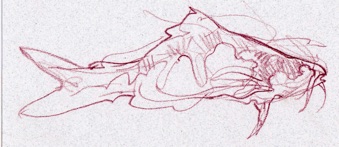

Windhorse & traditional depiction of Milarepa: carvings done by street artisans at Drepung Monastery, which I purchased and brought home - printing them myself.
Modern day Catholics will recall eating fish on Fridays in an admittedly minor, but still meaningful symbolic mortification of the flesh by abstaining from ‘proper meat’ for one day in every week. Lent too, is a widely observed Christian tradition. These are hardly otherworldly or bizarre-seeming practices, observed by a handful maniacal, God-intoxicated saints.
Extensive and disciplined fasting is a widely accepted practice among those seeking to periodically cleanse the body; shed redundant weight, sharpen the senses and attain to more subtle levels of consciousness. Done to excess, it can also lead to starvation through a well-documented concatenation of events that become continually more pathological as the body goes to ever greater lengths to husband its dwindling resources. After enough time has elapsed, truly pathological weight loss will typically take place. Strange metabolic pathways then predictably take over and dominate the physiology, which have their characteristic odors and tastes. Listlessness sets in. The starving person will eventually have neither redundant flesh left to metabolize nor energy resources to conserve for vital functions. Organs will eventually begin to atrophy and successively shut down, until nothing functions properly and death inevitable follows – unless one intends to wean one’s self of food and learn to take one’s sustenance from the primary – the original source. Intent is key and it is demonstrably possible. Many healthy and perfectly sane people have learned to do this - people who don’t necessarily talk about it or stand out as otherwise different from the norm.
Fasting has an obvious endpoint unless one intentionally makes the graceful quantum change to something less easily understood, but practiced by certain people throughout history. A fasting person can intend to take their energy and mineral needs from light, air, Prana, divine grace…elsewhere. Words come up short and the mechanism of action is admittedly speculative, but then most anti-biotics were industrially produced, widely prescribed and saved millions of lives ling before any mechanism of action was actually understood. Judge the tree bi its fruit - right? Remember that this has been done by many people before us and is reasonably well-documented.
There appears to be another source of energy into which we can tap that will supplant eating, but you must indeed stop eating consequentially (for a time at least) to prove to yourself that it can be sufficient for your actual physical needs. Otherwise you will never know or really believe something that so breaks with commonly held beliefs. Sun, air and water are the energetic and molecular building blocks of all life. They are clearly available and sufficient for the needs of other organisms. In some cases, it is demonstrably so for human beings as well. If even one person can access this primal source without eating, so can others.
Most of us know deep within our gut that there is something far more primal and satisfying at the core of life than is our mere workaday world as Homo economicus – something spiritual, which makes it all worthwhile. We know in our hearts that there is a benevolent something at play as an organizing principle behind all existence; God, if you like. Accessing that something else (which is freely available to each of us, if we only choose to accept it) is what allows this transition from mere fasting and eventual starvation to take place. Abstention from eating can become, at a certain point, something more than fasting – and indeed a quantum leap in capacities. It can become a piece of one’s spiritual journey upon this blessed green earth and under the benevolent sun – all leading us to living more lightly upon the earth, consuming less and being less in competition with one another and all other life. Just think how much of the earth is by now, subsumed into the making of our food – what used to be woods and meadowlands, rain-forest or estuary – all supporting pollinators, herbs, fish and all else that once included a far larger and richly inter-twined web of divinely ordained life.
Memento mori; dedicated to those who take their fasting a bit far

Scripta glagolitica: etching embalmed by honey bees
Monk from the Potala Palace in Lhasa: Meditating upon water burials and the place of fish in the greater scheme of it all - perhaps.
A future Friday Catfish-fry, still in it’s full natural glory
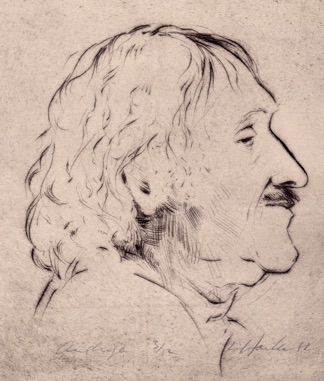
Andrija Puharich (1918 – 1995)
A leading pioneer in the study of human consciousness and one-time visitor at my studio one fine day in 1988, when he appeared from the great unknown to translate some early Egyptian hieroglyphs, spin stories, sit for a portrait and then disappear again – to be bothered by secret spy agencies and the idly curious breaking into his Oak Ridge laboratory from time to time until he died under questionable circumstances.
He was private about his practices, but out there a piece. He seems to have written his own epitaph at nineteen: “When a man belongs to posterity, he is an alien to his contemporaries, since the effects of his work are too far-reaching to be appreciated by his own generation…
The primary purpose in making myself known in this way is to share information with those of you interested in deepening your own experiences of fasting and perhaps taking that next step. I am not interested in a mass audience of debunkers and talk show enthusiasts, nor in teaching courses or taking anybody’s money or even making converts and presuming to become anybody’s guru – but in testifying about my own experience of having gone further yet, than mere fasting. I am publishing this tract simply as testimony and freely sharing my own experience and thoughts on this way of living – one which I believe to be part of a significant evolutionary change in consciousness taking place today.
All else is a long discussion that shall unfold in due course over the following pages. I shall tell you about it all in great detail, with plenty of side trips and anecdote, and provide you with bibliographic references to pertinent research how this has all come to pass and why. I hope you’ll stay with me and that you’ll find it worthwhile.
Like entering rarified, calm states of meditation, when we manage to drop into something as different mentally as a shifting of gears, we can make a quantum change in our practice, as non-eating evolves into a way of life.
Milarepa

There is an extent literature and published research, conducted by reputable medical scientists on those who have been living from Prana and consequently not requiring actual solid food. These are people following their inner guidance on a spiritual path, who survive in excellent health, without eating for years — even decades — each for their own reasons. This is by now, a reasonably well-documented contemporary practice with an extensive historical record, though admittedly well beyond the reach of popular mass culture and any but the most broad-minded and daring within the community of contemporary science.
Some call this practice breatharianism, which today feels a bit dated, but is at least relatively established as a concept. It has the disadvantage of being for many, devilishly hard to pronounce and is also generally misunderstood. Most practitioners themselves think they actually live less from breath, sunshine or anything so concrete and mechanistic (or easily described and quickly understood), and prefer to call what they do, living from Light or Prana (Hindu, for the life force.) Some even use the neutral and clinical-sounding inedia (Greek for not eating). I tend to keep it simple when asked and just say; “I don’t really eat”. That covers not eating, but also the odd exception – and that what I do, is really also about something else. Not eating is not, in and of itself, a big convoluted belief system with a doctrine. This is just an aspect of that much larger life’s journey. It isn’t an ‘ism” that takes place around not eating – an esoteric cult with secret handshakes, club-houses, hierarchies of well-established masters, teachers and novices, nor something tidily defined for us by an on-line committee of self-appointed web-masters at Wikipedia. Nothing at all like that. I just – don’t really eat.
I choose furthermore to write about it as a gesture of inclusion to those of you who might also wish to enter this territory – and thus to contribute what I know to a field in which precious little is available from those who have already gone this way before us and who actually know where-of they speak. I suppose there’s the danger of speaking prematurely – on the principle that those who speak, do not know and those who know, do not speak. But if we always hold our tongues, we will also be ceding the floor to those who are merely speculating or criticizing what they hardly understand – allowing the current level of ignorance to prevail unchecked.
As I slowly introduce you to what this is all about, please bear in mind that the easiest thing to which to attach one’s self here, is the simply insane-appearing act of renouncing eating – while neglecting to understand that far more is at stake. It is becoming increasingly clear that sugars metabolized by mitochondria through the ATP cycle are not the whole story of where we meet our energy needs, nor do only green plants derive energy from the sun. Chlorophyl is not the only known means for fixing the potential energy arriving with sunlight and transmitting it to the body’s cells as metabolically available energy. There are blessedly vast gaps in our current knowledge – and not just about airy-fairy matters of the spirit and soul or the moving targets, such as art and politics, but even the more hardened and stable-appearing targets of thermodynamics, vertebrate physiology and biochemistry. The gaps in knowledge are monstrously large.
Even knowledge as fundamental as understanding the human energy budget and what we need to eat to be fully vital & functional is still barely in its infancy. New discoveries will inevitably keep coming. Then again, consulting with past masters from the Vedic traditions and gracefully accepting their language, that it’s all from God, Prana or the eternal life source may be no less satisfying an answer to matters of food, energy and eating than is more mumbo jumbo in the form of convoluted and nearly incomprehensible equations. These equations rarely balance without major stretches of imagination and establishing of arbitrary parameters that exclude the more interesting questions. These equations will inevitably have to be revisited, tweaked and redefined by experts for the next few decades and at some point, probably once again dumped as unworkable. The important thing to carry with you throughout this whole discourse and to continually keep in the back of your mind, as I continue to introduce new observations is the following:
There is mounting evidence that we all appear to live primarily from Light or Prana and derive most of our energy from that direct source – whether we fast or not. Eating is more a supplemental matter of taking extra energy from the system for ourselves and having more to work with – which for the vast majority, still appears to be a necessity. By being very consequential in their diet, though, some individuals have proven that they don’t actually require food at all – that being able to access Prana, (the very life force itself) is all they ever need. For them, eating ceases to be a driving physiological necessity in life and that tends to be a great relief. Their discipline is rewarded by improved health, better energy and heightened sensitivity. If even one person can do this, it changes the paradigm. This is a phenomenon which is indeed very real.
I too have experienced that transition (though I am by no means an old master) and I can assure you that it is much like the caterpillar entering a cocoon and eventually coming out as quite another creature, no longer needing to eat. You know a lot more looking back upon the process (as a butterfly), than you do, looking forward (as a caterpillar) to an unsure future and wondering instead, where this could all be going. One should remember that being reborn as a butterfly requires having first died as a caterpillar. A bit daunting - perhaps even dicey, but ever-so-enticing – and perhaps inevitable.
In these two intervening years, during which I’ve learned to live from Light (or Prana) rather than food, I lost some weight, but that has stabilized. I weigh the same now as I did at 25 years of age (41 years ago) and that has not fluctuated up or down by more than five pounds (2,5 Kg.) in the last few years. I am otherwise healthy. I experience no hunger. I sleep half as much. And I engage in much the same activities as I did beforehand.
My Purpose in Stepping forward as Breatharian and my Intended Readership

Introductory Remarks
I stopped eating on March 3rd, 2015.
What in the world would motivate me to do such a strange thing as to stop eating? It’s a fair question. My wife asks me that very thing from time to time. It’s also not easy to formulate a fully satisfying answer for what is still an evolving way of life. I suppose the answer is severalfold, in much the same way that we are all complex beings who appear to be different people to the many friends and family members – for whom we fulfill the variety of roles that one is called to serve in life. You can approach most anything from many perspectives, much as does the Indian parable of the seven blind men describing an elephant. One who has been handling its trunk describes an elephant as very serpent-like, while the blindman handling his leg describes an elephant as treelike and so it goes. With enough viewpoints, you’ll pass through the confusion and arrive at a picture that is complete enough to be at least somewhat satisfying.
The simple way to begin is that I am approaching a time in life when one no longer relies upon parents to be the carriers of history and culture, while the grim reaper is increasingly harvesting souls from among one’s own peers. Years of meditation and some modest successes in the professional and material realms of existence have led to my also wanting more from life – to glean a richer harvest of meaning from my remaining days – before I too, join the deceased. The desire to live more spiritually and lightly on this earth has assumed a place of prominence in my thinking as has the desire to give less of my time over to the banal aspects of life. Of course I also hope to leave this world a little better for my having passed this way. It has all been leading me to question much of what I do.
I wanted to shake things up and discover the limits – even push them back a bit. Years of doing the right thing and conscientiously building my home, family, career and place in society have resulted in my also living in a certain social lock-step which can lead one to losing hope and the sense of each day being a gift of unending possibilities or conversely, that the sense of plodding, deadening sameness can lead instead to losing one’s fears. What, after all, have you left to lose? Your indentured servitude to stuff – to money? So often one just goes with the program and it’s not an awful life. It’s actually been quite good and I have much for which to be grateful. But then one fine day, you do something unspeakably spontaneous, which breaks the pattern and can find no reasons to regret having done that. We are so much more than we appear to be and what we limit ourselves to being. Breaking with the social norm of eating has been one of the ways in which I’ve demonstrated this to myself.
There are people to whom you drop casual mentions of Shamanism, Re-incarnation, Megalithic Cultures or Crop Circles and their eyes quickly glaze over. ‘Oh God, spare me that mumbo-jumbo. What’s next - little green men from Mars?’ And then there are those of us in whom such talk awakens hope, that there is something left to believe in and get excited about – that it’s not all just death and taxes. And that is me and my relationship to food and fasting. I‘d been aware of breatharians existing for perhaps three decades and the mere mention of such things has long elicited an immediate feeling of anticipatory excitement. Just the potential of that level of liberation from the ordinary way of life raised my heart rate a notch. I sensed that I too, would do that some day - though the practitioners I’d ever heard of, were nowhere near at hand or easily accessible.
Many experiences that are meaningful have that kind of purposeful measure, seemingly built right in. You meet your future partner in life and there is something so juicy about that fortuitous introduction that stays with you until it can indeed come to fruition. One takes in the information, rather than suppressing it and it stays with you as a living thing, until eventually, there comes a moment to take action. Maybe it’ll be a Saturn Transit or perhaps a mid-life crisis – perhaps a disappointment too many – but there comes a day to just do something (anything at all) and you throw the switch, sending your life careening off in some new direction. If you’ll forgive me, an apt old American folk idiom tells us that; ‘it’s time to shit, or get off the pot’.
The world so often seems to be a conspiracy of mediocrity – everybody holding mirrors up to one another and re-enforcing the many self-limiting assumptions that life can never be much more than a race to decrepitude and death. No surprises. No mystery. No empty places left on the maps. No territory left to be explored. It’s all mapped out, predetermined and dead as a tax ledger. From the day you’re born, you’re led to expect life to be an eternal treading of water, earning of degrees, competing for jobs and mates, honors and approbation – making money to meet our obligations and pay for the health insurance we will require when the stress of this way of life brings the inevitable heart attacks, depression or cancer. We all keep each other on track, reminding one another of what disease aught to be next, of who is looking shabby or frayed at the edges and making sure nobody escapes the sentence. Eventually we all become exhausted and succumb to the hopeless flood of useless stuff that rules our lives. And yet – if you pull the curtain aside for but a moment, and look for some sign of leadership, there doesn’t appear to be anybody at the controls. Everything, appears to be running on auto-pilot. I see little reason to follow that parade of lemmings off the cliff and into the sea. Do you?
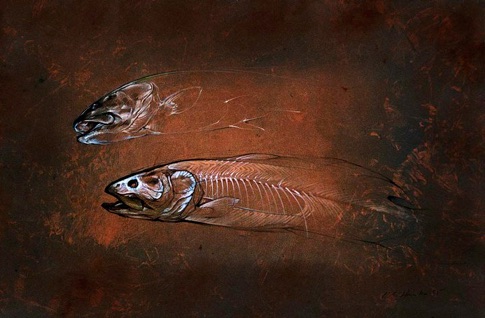
Bowfin: North American lungfish – an air-breathing fish, when that proves necessary
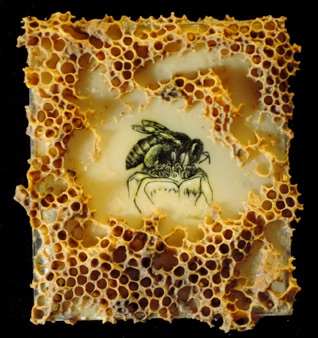
This peculiar matter of my not eating, leads inevitably to many questions and discussions that require my continually repeating myself. Addressing those well-meaning questions in this long and comprehensive format, is my gift to the many people who’d like to understand why I do this and what it means – if it is safe or even possible. I have by now, had something over four years of experience experimenting on my own flesh in this matter and have things to say about that – and – I am by nature a scholar, who looks at things thoroughly. I am also an experimenter who needs to know rather than just take another at their word and believe. That happens up close and by actual experience on one’s own flesh and sensory apparatus. I am aware of my penchant for exhaustive treatment of materials that interest me and so you’ll also find a wealth of visual breaks (often my own artwork) interspersed throughout to keep it graphically interesting and conceptually broken up into discrete sections and digestible bites. I don’t wish to inundate you with a daunting ‘text desert’ and little more than extensive theoretical discourses. You have before you a manuscript whose volume is the equivalent of a small book (65 pages) and you’ll be excused if you skip ahead to what interests you and return to the rest later. Mostly I hope you will find the time you spent with my thoughts on breatharianism (or living from Prana) to be discerning & informative as actual testimony from one who has entered that territory and who knows where-of he speaks and therefore ultimately rewarding.
A wood engraving of one of my girls in preparation for a Mead Label – with some help from her sisters.
Forward
My Purpose in Stepping forward as Breatharian and My Intended Readership
A brief historical overview of the Origins of Breatharianism –
Saints, Saddhus & esoterics
My own experiences with the cessation of Eating
How did all this happen? Why on earth would I do such a thing?
Do I really – truly – not eat?
On inhabiting that middle ground – tasting occasionally, but not requiring food
Results of the Experiment – the Nitty Gritty
Discussion – my experience placed in the context of Contemporary Breatharianism
Long-lived people and fasting –from immortals in the high Himalyas
to ancient draft dodgers from the Napoleonic invasion of Russia
On breaking the mold and doing the seemingly impossible – (firewalking)
Science looks at contemporary breatharianism – (as well as epigenetics, what the human soul
weighs, human photosynthesis, starvation, weight problems, evolution and much more )
Beyond science and into my own speculations – Goya, the disasters of war,
False Gurus and the Maharishi effect
In closing – what your grandparents and children can teach you – and the Quantum Field
Benediction – message in a bottle
Table of Contents
Instead, I find far greater joy in my own forays off into the unknown – when I break through the walls of my own limitations and realize that what I had once assumed is not necessarily all there is. There is nothing quite like having one’s own adventures. Though they may appear to be little more than a Quixotic tipping at windmills to anybody else, they are your own experiences and far more meaningful than those that stem from mere common knowledge and the meeting of social obligations.

It is in this very spirit of curiosity and exploration that I have taken the deliberate step of moving past occasional fasting and into something far deeper as an organic evolution within my own spiritual journey – one that has been decades in the making.

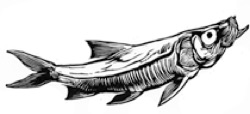
Forward

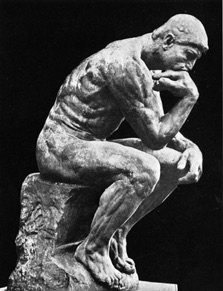
I know what it is to be thinking about this process with trepidation, but also driven by a compulsion, coming from deep within. There are those of you reading this today, who ardently desire to enter this daunting new territory with eyes wide-open – knowing all you can. Like myself many years ago, you will have heard talk of this being done by others somewhere in exotic places and been wondering about it all. Years elapse, in which you continue to receive the occasional faint whisperings that this could be more than mere rumor – that feeling of it being something more than a peculiar foreign practice, but something tantalizingly familiar and drawing attention to itself – perhaps even awaiting you, when you are ready. It’s a phenomenon from among all the many strange things people do, about which you find yourself never being able to know enough and which seems so implausible, so pie-in-the-sky, so unscientific-sounding. And yet – what if it is indeed possible?

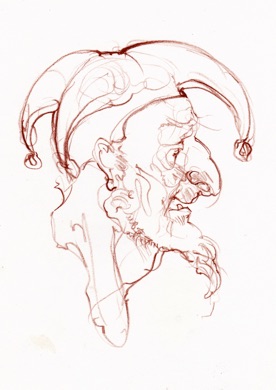
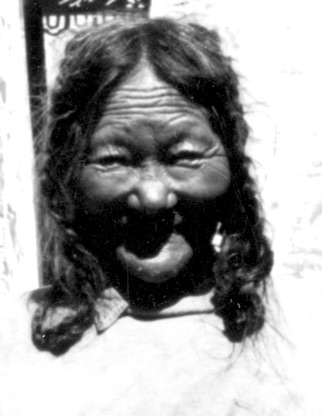
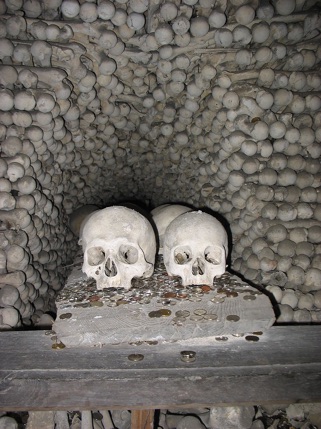
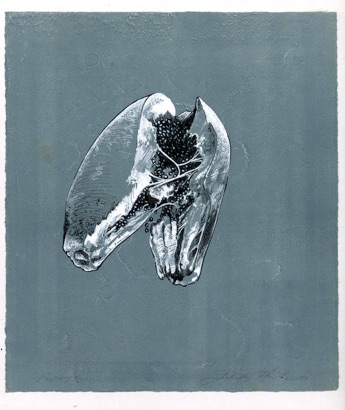

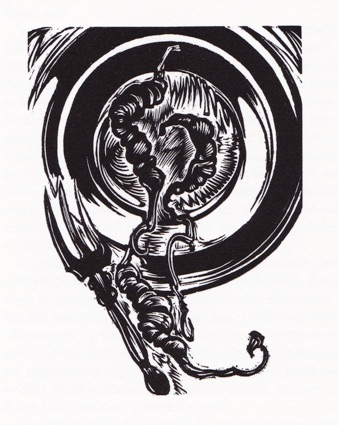

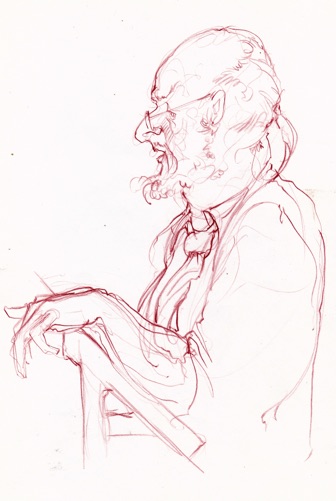
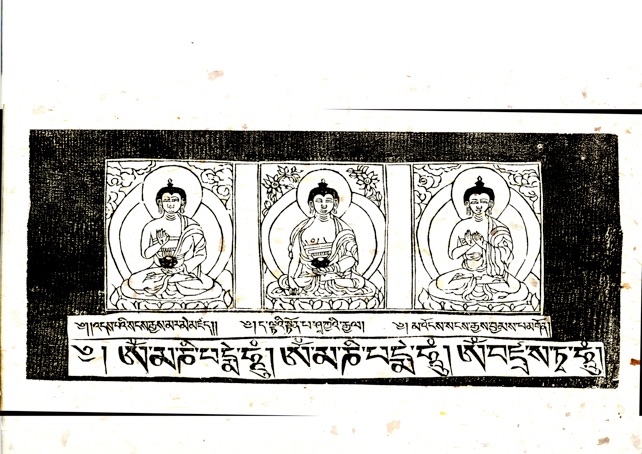
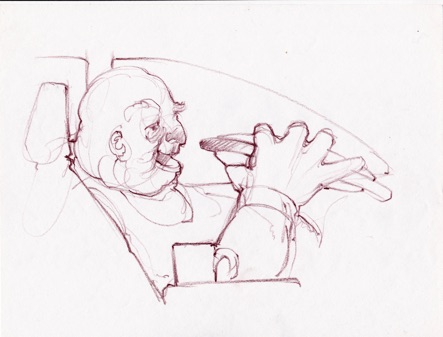
I have been living from Prana for over four years. By any ordinary medical model, I should long be dead. Instead, I am doing fine and indulging in much the same activities as ever. I am hardly a saint living on a mountaintop. I am a self-employed, married artist and householder. I deal with much the same travails of this world as do any of you.
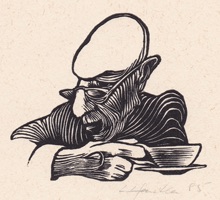
We inediates typically do not eat, but not much else unites us and of course, there are exceptions to all rules. The point here is nothing like a doctrine or an established practice governed by rules., trade groups, boards and by-laws. It‘s a private matter and highly individual. Speaking for myself; I have entered this new and unstable ground in the desire to kick my way of living up a notch to one which does not require my killing living beings to eat, but by obtaining my energy and nutrient needs more directly from my immediate environment – from the very source of all life. Thus my intent is to live more subtly, more aware and to create less collateral damage by the way I choose to live. What I do is part of a larger spiritual practice in which I am just now finding my way and not following anybody else’s prescription. This is indeed terra incognita and unstable ground at that. One cannot eat one’s way to heaven by going organic, vegan or anything else. Neither can one fast one’s way to enlightenment. This practice is but one of many ways to open the gates a crack, but in and of itself, not the ultimate goal.
That said, I do not believe in hiding one’s light under a bushel basket. Valuable and potentially paradigm-breaking realizations are to be shared and if my testimony becomes one more modest contribution among many, it will have served to make the unacceptable seem less dangerous or extreme – maybe even palatable and eventually normal.
Before embarking on this journey myself, I scoured the web and libraries for any information I could find. Available literature turned out to be highly varied in its quality, but seductively fascinating and also frustratingly scant and elusive. I will do my best, for your benefit; to draw upon all I have read and filter it through my own experience of a four-year abstention from food. I will be a bit longish in my attempt to be comprehensive, because I still recall what I had hoped others might tell me and how hungry I was for a whole picture. It will, however, be without the redundancy of repeating what others have written about the various available workshops and how teachers introduce others to the process. You can find that elsewhere on the web.
During the winter of 2015, I'd been reading some of the breatharian blogs and literature and felt due for a late-winter cleansing fast, when I was approached by students from Kalamazoo College to speak at a TEDx event. The students had heard me lecture from time to time about art, bee keeping and environ-mental ethics and they seemed to find me inspirational or at least entertaining. I felt honored, but I wasn't sure I had anything to say that was a single pithy message worthy of TEDx Talks or of my spending the time to prepare an 18-minute presentation choreographed to that expected level of perfection– one which I’d be prepared to present without notes, gaps or running overtime. It seemed that I needed to break the mold and dare put myself on the line with a more chancy presentation.
I stopped eating the day I accepted the invitation to speak at the TEDx Talks event; assuming that ten weeks later, I would have had adequate time to prove that I can or cannot withstand the rigors and would have things to say about the experience. It wasn't particularly difficult. Hunger itself is compelling for several days and naturally subsides soon after that initial stage. I sailed through the ten weeks and never went back to my old ways.
Like many of the publicly visible people who have lasted as breatharians, I took no workshops, 21 day guidance classes or anything similar. I simply stopped eating as a logical outgrowth of the way I'd been living and evolving up to that point and continued with my life much as ever. That does include many practices one might deign to call spiritual disciplines. I have been actively practicing shamanism for nearly three decades and meditating far longer. I find my connection with the divine in nature and in my vocation as an artist, more than I do in a church or through scripture. These are all ways of living that aren't necessarily the norm, but which are hardly asocial or truly strange. Most any monk would find me to be a kindred spirit involved more in the mystical aspect of religion, than in running the store. Not that much else has changed in a visible way and people typically do not know this about me. I have never met another breatharian. They seem to all be in Australia, India, Israel, Russia – some place other than a mid-sized, mid-western town in Middle America.
I eat much as do Ray Maor, Jasmuheen or Dr. Michael Werner and the many others who are clearly legitimate practitioners and not reliant upon food – visible spokesmen and of course, lightning rods for this phenomenon. That is to say; I do eat, but only occasionally – mostly when it is inconvenient to abstain. If my mother invites me to Easter dinner, I eat. Typically it will be far less than I would have eaten in the past. But this is important – when I do eat, I also digest and excrete normally. My body has not atrophied from disuse. It functions utterly normally, but is simply not being used for those normal functions most of the time. Whether or not I eat, some level of excretion continues to take place because the body is always making new cells and eliminating old depleted tissue. Mucus flows continuously through us in a physiological house-cleaning process, eliminating dust and dirt being coughed up from the lungs and swallowed. One’s lymphatic system still functions to clean out invasive parasites or bacteria, exhausted lymphocytes and all else no longer useful. All these byproducts of our normal metabolic and physiological pathways are continuously being drained into the intestinal tract for elimination. I drink, sweat and take in moisture through the atmosphere and so I continue to eliminate urine. The process is the same as ever – just greatly reduced in volume.
Friends still invite me over for a meal and I will generally take a small portion and make it last – then go back to my peculiar way of life, without a lot of troubling explanations. My wife has much diminished her own food consumption, but still cooks for herself and I will often have a spoonful of whatever she's having – to be a participant at least in some small way of that fulfilling aspect of family life. Watching a film at night, I sometimes split a grapefruit with her, thinking that it might be healthy to occasionally have at least some minimal peristalsis take place so that organs of elimination do not atrophy. I was once a zoologist and I suppose this is still the vestigial scientist in me - wanting to have his say – or perhaps the ‘Doubting Thomas’.
I detect no evidence of pathological atrophy. I engage in strenuous physical activities on many days – like running a chain saw and splitting firewood. I keep bees, do much of my own construction and home repairs, indulge in long walks, kayaking, bicycling, table tennis and cross country skiing. I keep up with others – even set the pace at times. I certainly have no more than ten percent of my prior caloric intake to account for my expenditure of energy – usually far less. I am satisfied on most days with about 4 hours of sleep – half of what it used to be. I lost some weight and went from 175 lb. (80 Kg.), to a low of 135 lb. (61 Kg.) and then went slowly back up to a plateau that hovers around 145 – 150 lb. (66 – 68 Kg.). I am 6 ft. tall (183 cm.) and weigh the same today as I did at 25 years of age. I fit into clothes from my early adulthood and definitely lost muscle mass. My vanity is mildly tested to look so skinny, but I am not hindered in my activities by that diminution of body mass. I’m healthy and active for my years, while my weight is what it was at the age when most are at their peak health.
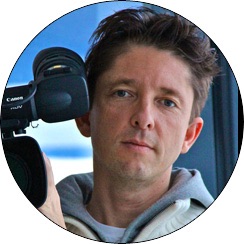
I enjoy the occasional taste of food – mostly beer and wine or tea and coffee. I do still drink water, but far less. Drinking seems to have become a substitute for eating and more a physical or social pleasure than a need. I’ve never been much of one for fruit juices, but I do occasionally crave a swallow of the loose, clear liquid component of yogurt or Sour Kraut juice. I am unsure if my body needs an occasional shot of probiotics for maintaining optimal gut health or if it is the vestigial scientist in me that still cannot fully let go and thinks this would be wise prophylaxis – just in case. I do get far fewer colds or other common seasonal maladies and when I do, they seem to pass far more quickly. My system seems unattractive to intestinal parasites and so I no longer need the occasional vermifuge. When I have been exposed or tired and can feel the beginnings of a fever, it generally dissipates soon. The nascent disease simply goes away in a day or two – and not the typical two weeks. It helps at this point to get more consequential about my diet and not allow even a bit of sugar into my system. I tend to think this is about having an essentially alkaline physiology, which is not conducive to the survival of most human pathogens, but that is also conjecture on my part.
Another curious observation on disease, is that I have found that it seems to generally arrive when there are no imminent deadlines or obligations that I cannot put off. I seem to get sick when I can afford to do so – that's when the body cuts out and takes a rest. I have seen statistics that the least sick portion of society tends to be young mothers – hardly a stress-free demographic. Young women are plenty sick before they have children and once their children are capable of getting by on their own as well, but while they have helpless infants in their care, there isn't much choice in the matter, no matter how badly they may feel. These young mothers simply don't get sick with anything close to the frequency of any other sector of society – because it’s not in the cards. They can’t afford to get sick and don’t.
When I feel badly it is typically associated with astrological/cosmic events - new moons and equinoxes or perhaps solar flares and eclipses. I seem to be able to track this phenomenon among the people I know, that others are often suffering similarly on the same days. It tends to feel like a hangover and not a respiratory infection or digestive problem. I sense that these events are about the body absorbing a large bolus of energy and dealing with changes at a cosmic level. It's a significant phenomenon of this time period. I sense that with at least the garden variety of colds, flues and minor nuisance diseases, there can be another dynamic at play than the self evident one of there being a virulent organism taking us down at moments of weakness. The body occasionally needs profound rest or a time to reconfigure, adapt and otherwise reform and do so with the mind essentially out of the way and put on hold.
The intelligence of the body appears to me to be choosing times to be sick, rather than merely relegating that to prevalent diseases dictating the course of events in our lives. At the very least, that seems often times to be the case. By extension it would imply that there is also something to the folk wisdom that we do each have an appointed time to meet with death – that it isn’t a random event determined by single-celled organisms proliferating in one’s gut cavity. Life has purpose and when that has been accomplished, there may well be some time to savor and reflect upon this, but essentially, it is your time to move on.
It is a curious thing, when asked, how to answer what I do and to do so in ways that are truthful and pre-empt the typical concerns of family and friends as well as skeptics. Many people hear me say that I don't really eat and close down. They don't want to hear more or they refuse to believe it, a-priori. I must be faking it, grandstanding or just drawing attention to myself by trying to prove something absurd. Some worry about me and what others have poured into my head – though that has mostly abated as the novelty wears off and years later, I seem to be otherwise normal. Others fish around for ways to catch me transgressing against what they think the point is (or ought to be) – setting up a straw-man argument. “Well, either he eats or he doesn’t. Which is it?” If they look long enough, they will indeed see me ‘transgress’ against what they think I should be doing and probably proclaim me a fraud. Much the same happened to Jasmuheen, the first well-known teacher of breatharianism living in Australia. Critics ‘discovered’ food in her refrigerator. Are her husband and guests also required to be food free? The point for me is not to prove anything to those severe skeptics and humorless inquisitors looking to trip me up.
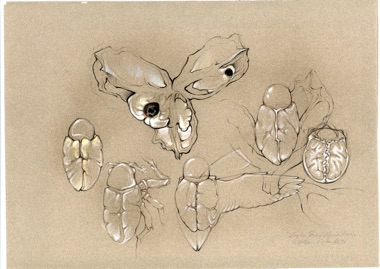
For four years now, I have found it indeed possible to function as an inediate, simply living from Prana and functioning in good health within social structures that are frequently stressful – occasionally brutal. That is a description of unequivocal success. But, to honestly assess what is happening, one must also be willing to look past obvious successes and openly examine the touchy places – where things aren’t going smoothly. For me that is all about stress. If I have problems, it is when things aren’t going well; if a deadline isn’t being met; if somebody lashes out at me for reasons I do not understand. Those are the moments when I tend to crave coffee, sugar, alcohol, tobacco – all tending to ground me in the here and now. Those substances also lead me quickly to also craving food, but not incidentally to hunger (which seems to be a separate issue). The occasional moments when I do backslide are exactly these.
Instead of beating up on myself for being weak, I take the attitude of listening not to some abstract doctrine or arbitrary set of gaming rules, which I once set out as a goal for myself, but to the signals from my body and soul – seeking discernment. This is all a learning process whose intent is real growth and not simply attaining to a new level of more rarified and refined stagnation that corresponds to my playing by a new set of gaming rules. If I am being drained of energy by a passing temporary situation, I will need to learn to deal with that. Eventually the solution will be about pure consciousness, anticipating problems and side-stepping my stressors, much as a Kung fu master avoids contact with an attacker. Meanwhile, my life in relation to eating or not eating is still a work in progress. If there is an energy deficit that doesn’t feel good and my body is telling me to reach for stimulants and in due course some small amount of food to shore up the losses, I need to listen and accept my shortcomings as inevitable aspects of the learning curve. I haven’t been navigating this terra incognita for decades. I may be imperfect in my discipline, yet with the exception of trying to explain it to some self-constructed internal critic, any shortcomings are without fault.
The classic inediate is the saint who wakes up one fine morning in full possession of the knowledge that God has this in store for them and who accepts their lot with profound humility. What separates me and my kind of modern inediate from that saint or a monk in a monastery is that we are forging a path that is not separate from the demands of modern life. We continue to function within a maniacally competitive and usury-driven economy, among large numbers of people, in a polluted environment. I have accepted the demanding calling of being monk-like and calm enough in my day-to-day demeanor to continue working within the confines of my worldly vocation without eating - and I do so without monastic support structures or the luxury of separation. This approach clearly carries it’s added difficulties and raises the stakes. Though feelings of actual hunger are rarely a part of that equation anymore, the shakes and rattled nerves do still appear when unexpected stress is placed upon my system. These are not problems that typically arise when splitting wood or doing things that are physically demanding. They are clearly associated with emotional stress, the mind-games people play alongside financial insecurity and the many social pressures we all labor under – even those that we essentially placed upon myself.
Other studies of long-lived populations were conducted by Soviet scientists soon after the Second World War. They were finding significant pockets of extremely long-lived people in rural regions and wondering what might be learned. In the Caucasian Mountains there were quite a few of those, whose age was clearly extreme, but also ill-documented and difficult to confirm. Many births went unrecorded and young men had often doctored what records did exist, to avoid conscription in the Napoleonic wars. Those wars were by then, 130 years in the past (1812-1814), making any potential conscripts, by that point, at least 145 years old. Much like the Hunza people of nearby Central Asia with great numbers of centenarians, they found that the common denominator among those extremely long lived people in the Caucasus seems to be have been a hard life, lived in mountainous terrain with highly mineralized soils and water in a clean environment – but that they’d also typically endured long periods of privation. They didn’t necessarily fast per se, but were subjected to suboptimal nutrient regimes that often lasted for years and thus may have inadvertently become something close to breatharians for lack of other alternatives.
Leonard Orr has made a study of the purported immortals living in the Himalayas entitled; Breaking the Death Habit: The Science of Everlasting Life (1998). This is not something I feel competent to comment or question, but he does make claims for people who have been alive and active for centuries and even millennia and does a good review of the information available. He has made the effort to find these individuals and claims to have met eight of them personally. It is a portion of the literature that is rarely referenced and I find it fascinating enough that I’d be remiss in not mentioning it. Some of these people are relatively well known (in certain limited circles, at least). Most are recluses. Some appear in public on a regular basis or have ashrams where they teach. Some have been alive for thousands of years and do things beyond the pale – manifesting for a while and then dematerializing or conversely, bi-locating. There are records of their existence that to go well beyond taking the author at his word. Some have large followings and appear regularly at Khumb melas and other large religious gatherings. These too, are people with no need of food. They eat if they want and do not bother otherwise.
Hotema, Orr and others discussing traditional inediates and long-fasting saints of the eastern traditions often seem to mention that they had fasted for a ten-year span here and a two-year time-frame there, with years of ordinary life elapsing in between. These mentions tend to be quite casual, without really appearing to have been intended to draw one’s attention – just that long-term fasting appears to go hand in hand with longevity. Yet it reminds me too of the Buddhist tradition of monastic vows not necessarily being seen as such a permanent commitment as tends to be the case in western monasteries. One’s life takes its twists and turns and people go into retreat as that proves necessary or attractive. Some of the current western breatharians make claims for staying clear about one’s intent and not eating anything at all, lest one lose the capacities, while others speak of this being a learning process that once learned, is there permanently. Once you have the capacity for taking your nourishment and energy from Prana, your body knows how to do that, whether you choose to eat or not. You are free to come and go at intervals that are as inscrutable as are the dictates of each person’s own individual journey.
Aside from longevity and new sets of teeth in advanced age associated with long-term fasting, I have also read claims by breatharians for improved eyesight, increased acuity of hearing and dark hair regenerating in older age. I cannot claim to have had any unusual regenerative experiences myself in the modest time I’ve abstained from eating, but then I have always been reasonably healthy. I have never required medications and I’ve now ceased taking vitamins or supplements. I don’t seem to miss them and may never have needed them in the first place. Hard to say. The only minor exception I can call to mind is that several of the darkly discolored areas on the backs of my hands (commonly called liver spots or age spots) have diminished in size and intensity of pigmentation, while one has disappeared completely. Otherwise, I still wear reading glasses and my hearing isn’t what it was, before Rock & Roll as well as gun fire did their damage. The obvious changes I have noticed are that I require substantially less sleep – and my weight has stabilized at about the level it was as a young adult.
I’ve participated in two fire-walks with an experienced Cherokee guide. How I gathered the courage to take that first barefoot step into searing hot coals that could have melted beer bottles, I will never really know. At a certain point though, I faced the fire. Instead of turning away and continuing to circle, drum and dance, something shifted deep within and I felt it in the pit of my stomach. It wasn’t really mental. I was calm at a gut level and no longer worried about looking foolish by backing down nor of getting burned. From that newfound sense of profound calm deep within, I knew that I could do this. I stepped off into the fire and felt no more heat until I stepped out again. I walked slowly, purposefully, back and forth. The bright red, burning coals, crunching underfoot and coming up around my ankles and between my toes felt much as it does to be walking on a fall day through dried leaves. I suffered not so much as a blister. Once I was out of the coals though, several tiny sparks caught between my toes, too small to leave marks – smarted like little diabolic reminders of what I’d just done. But the intense inferno that should have made cinders of my feet – left not a mark. I suppose my expectations were at play. I was impervious to the intense heat while in the fire pit, but once I stepped out of that designated, sacred space, the usual rules of time and space once again applied. One person did not take the ceremony or preparatory exercises seriously and was badly burned. It’s real and must be taken seriously. I did so and this experience of fire-walking comes the closest of all else I’ve ever done, to the cessation of eating. In both cases, I experienced doing the seemingly impossible.
Monfort, on becoming a breatharian: “Emerging from the cocoon, you are a new creature and everything is different. There are no laws. There are just fossilized habits. And the whole journey is crossing these habits - locating them and realizing the barrier to your development is also the lever. Medicine and biology have their codified barriers, which are all levers of sorts. If there is a wall, there is also the other side of the wall. To find the wall, to know it is a wall, is to be able to cross it.”
How about them walls - eh?
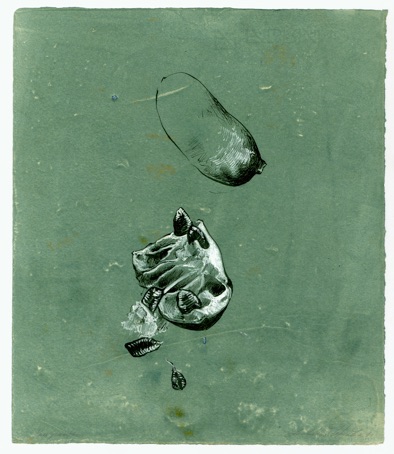
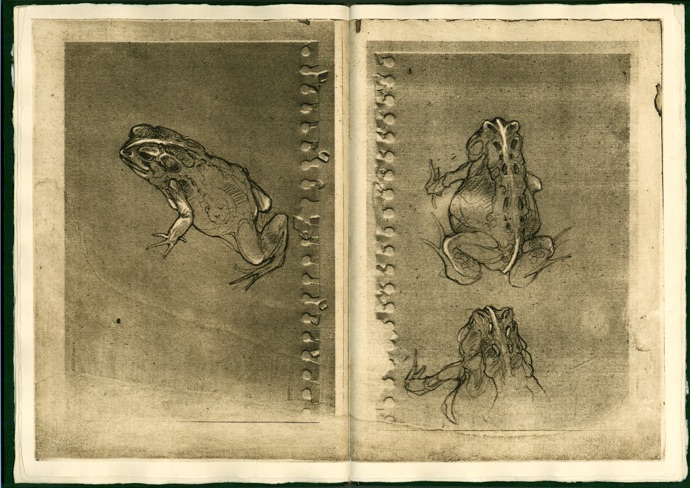
We seem to do OK eating potatoes – extracting the energy and nutrients we need and excreting the rest or conversely, for some at least, it also appears possible to simply cut the potato out of the equation. In such cases they do not need to raise them, hoe them, water them, harvest, grade, package and distribute them and then gas up the car to drive to the store and purchase the potatoes, peel and boil them and eventually clear the table and wash the dishes – all as a way of creating expensive feces which must be flushed away in potable water, which must itself be subsequently processed in a sewage treatment plant to make the water wholesome again and suitable for being returned to the river – clean enough not to kill the fish. Well, that’s quite a lot of trouble to go to, just to eat some potatoes! With adequate consciousness, we may well be capable of simply taking in the sunshine, as does the potato – and not bother with all the rest.
Perhaps we are not all equally constructed or conversely, perhaps we can all eventually learn to do better. Perhaps it is stress or something else – maybe something as ancient and mythic as the energy loss, by which one individual robs another through the evil eye, utterance of curses, feelings of passionate envy and all else from folklore – things not that well understood or described – but which are recurrent elements of folk culture across vast parts of the globe. Perhaps that negative unseen aspect of the close up and personal human-to-human interaction forces us to extract an extra dose of energy from the body just to get by. Perhaps for this extreme way of living life in the typical modern pressure cooker, which we are mostly forced to inhabit, we do after all, require at least some food. Perhaps living without sunshine and working from dawn to dusk in windowless cubicles, breathing recirculated air with a micro-wave transducer (mobile phone) held to your brain-case much of the day requires greater compensating caloric intake from other sources. Perhaps, perhaps…It does seem that intent and imagination come into play as well. Those who live by materialistic doctrines, calories, money and the stuff you can weigh, measure, calibrate, count and for which you can charge interest – they seem also to die by them.
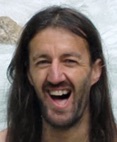

Francisco Goya - The Disasters of War
Civilization and human evolution too, are not so clearly a simple pathway from primitive to sophisticated that is by now well understood and requires only finding the ‘missing links’. We are clearly far more ancient than once thought, if one only allows one’s self to reflect upon all the remains of an ancient and worldwide megalithic civilization continually being unearthed and documented. Then there are the amazingly accurate portolans (hand-drawn maps) carried by ancient mariners and that described continents ostensibly still remaining to be discovered and coastlines that were currently covered in ice sheets and essentially un-chartable without modern-day technology. There are various writings and inexplicable technologies that continue to turn up in odd places from improbable-seeming time periods. At some point, that which doesn’t fit current beliefs will cease to be regarded as outliers and flukes and become accepted as data.
There are simply more and more Black Swans out there which one need not be able to account for, but which keep pushing the limits of credulity for a merely mechanistic or simplistic materialistic world-view. How many more discoveries of human remains and artifacts found in strata that are millions of years old it will take, to begin seriously questioning and reformulating our generally accepted thoughts on human evolution? There is even a growing interest among scholars in the Vedic view of civilization as a cyclically recurring phenomenon. This I find best described in the very comprehensive compilations of evidence being published Michael A. Cremo – an exceedingly careful and thorough scholar. Things appear to be less and less certain and not as we'd imagined them a hundred years ago, to be without mystery and thus mechanistically explicable, given enough time and information to fill in the remaining gaps.
For those of you to whom this whole argument is too strange for words, I ask that you recall how often looking at familiar phenomena with new eyes reveals new information. When you lose your fear of outliers and facts that don’t quite fit an old paradigm, you begin to learn important things. The approach of coming to truth through competing adversarial argumentation, with proponents and detractors (or debunkers) taking turns making their cases is ultimately false and generates nothing creative or new. This is merely an extension of a legal model and a way to enshrine preservation of the status quo – and no way to arrive at any other truth than determining who is powerful, well funded and persuasive – and even determined or under-handed enough to successfully hide evidence and stack an argument in his favor or to bully a witness and confuse a jury. It is an article of faith, for which I see little evidence, that the truth always prevails in a fight. Sometimes there is quite another dynamic at play. If having top-flight (and very expensive) law firms in one’s own court played no significant role, because truth always wants out and will ultimately be recognized as opponents present its many aspects to a judge and jury, these law firms wouldn’t be in a position to command such astronomic fees. Excellent law firms and their equivalent advocates in other fields of endeavor do quite well and it is precisely because their services get results. There is the saying that, “ He who claims money can never buy happiness, never sat in a courtroom”.
There are always those vexing shades of grey and more appropriate ways of phrasing the question – novel ways of looking at the unsolved conundrum. Attaining to the Truth (with an upper case ‘T’) is a more subtle procedure and places a higher onus of responsibility upon us. I expect more from scientists in search of ‘Truth’, than I do from profit-driven industry representatives with explicit, legally defined, fiduciary obligations to investors, or from political spin-doctors and self-aggrandizing, ego-driven debunkers. There is a higher, noble and unselfish purpose at hand. Central to that investigation is the experience of those who are the outliers – who appear to disrupt the paradigms which most others have come to accept.
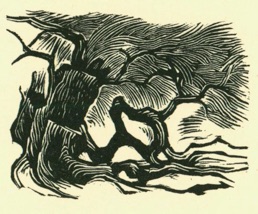
That’s right. Trees have been shown to share resources, make room for their peers in the sunlight and to pass nutrients along to one another. Peter Wohlleben, a German forester near the ancient Carolingian city of Aachen, reports stumps in an old growth Beech forest still alive centuries after having been cut – because their siblings have been feeding them through their interconnected root systems over the course of all those intervening years. They appear to be conscious and caring.
It’s curious that I gained nearly half my weight loss back in a year’s time and yet I really do eat negligible amounts that correspond to no more than an occasional taste when compared to my earlier culinary practices. This corresponds to my earlier observations when backpacking and camping, that I seem to require far less food under these regimes of far greater physical demands. The emotional stress is of course absent in the woods and the regime of being in close contact with the earth, fresh air and sunshine would explain much, but energy demands are certainly not less. Similarly, I recall noticing on occasion that a handful of wild strawberries (raw living food) would keep me going for days in the woods and in quantities that would hardly have whetted my appetite back home.
On inhabiting that middle ground – tasting occasionally,
but not requiring food
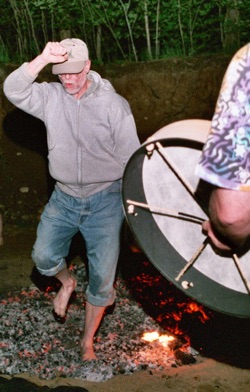
On breaking the mold and doing the seemingly impossible
The French pranarian Henri Monfort, published a book on his own experiences entitled; Pranic Nourishment; Another path to a spiritual life. Here he speaks of being an explorer in Terra incognita – of entering ground that is not well-described and of trusting one’s experience above all else. As a shaman, traversing non-ordinary reality and being cast back continually upon his own resources, is what he does every day. Not eating is one of many aspects in his life that do not fit the norm – but which also demonstrate that the norm is not always the way things must inevitably be.
There are many human practices that are hard for a modern-day person living in the materialistic paradigm to accept. Indian mystics are buried for months and unearthed without damage. Others puncture themselves with skewers in transcendent states of mind without bleeding, creating scars or leaving a trace. Still others talk to the dead and remember peculiar details from past lives that can indeed be confirmed. Many societies mark holy days with fire-walks. It makes one question why they can do that which we, ostensibly, cannot. I‘ve participated in fire-walking and I am still at a loss for an explanation of what took place. It was however undeniably real and seriously bent the rules of what seems possible.

Gerald Pollack elaborating further on the basis of a newly described fourth state of water, writes;
“Clearly, humans exploit light. I've described a water-mediated mechanism by which light energy gets transformed to other kinds of energy. The process bears some resemblance to photosynthesis, or at least the initial step of photosynthesis, in which light splits water into positive and negative components. Subsequent steps are less clear, and that's why, on the question of human photosynthesis, I suggested a definite "maybe." Herrera and colleagues might be on a productive course.” For a discussion of Pollock’s work and it’s implications as well as further references see: http://www.greenmedinfo.com/blog/can-humans-photosynthesize-1

These studies look mostly at the capacity for melanin to absorb energy as well as a molecular ordering potential of a fourth phase of water. This is all quite new and more details will clearly be forth-coming, but why should this be surprising? Did we not evolve under the sun, just as have green plants? Have we not been subjected to much the same evolutionary pressures - maybe more so, when you regard the ecological niche we inhabit as a species? We are highly adaptable generalists and colonizers of new environments - omnivores, who have no particular obligate food requirements. Our kind has often been on the ropes and gotten through environmental changes and around formidable predators through sensitivity, quick thinking and brinkmanship. We now inhabit all habitats on the earth. If ever there was a species to evolve an alternative to photosynthesis we are it – as might also be rats, pigs, cockroaches, mongoose – with lives and long-term ecological successes much like our own. Some social insects (such as bees, ants and termites) come to mind as well – all animals that are supremely adaptable and capable of overcoming habitat fluctuations and difficulties through behavioral adaptations.
And the big complex chlorophyll molecule that is central to photosynthesis? It is almost identical to the Hemoglobin molecule and the Hemocyan that sloshes around inside insects – but for a central atom of magnesium rather than iron. As mere co-incidence, that really would strain credulity.
And altruism - that too is real. We don’t just fight and kill one another. The human condition seems first and foremost about co-operation rather than competition. People do self-sacrifice for the good of others. We share information, potential trade secrets and help each other learn and we do so continually, while castigating those who don’t do so as being stingy or anti-social. Altruism is a human attribute with which every biologist grapples and finds himself examining (with some doubts). All the perplexingly convoluted kin-selection theories just aren’t that convincing. It's one of the classic troubling aspects of strict natural selection and Darwinian evolutionary models. Altruism is moreover not just a uniquely human characteristic, but one shared by other mammals and social insects – even trees.

My own grandparents: Richard and Antonie Neugebauer, who enjoyed the benefits of great age – perhaps accorded them through the services of two world wars and thus approximately a decade of involuntary proto-breatharian training.
In closing I find myself wanting to remind anybody still with me, of things our grandparents once taught us – of knowledge that was once commonplace: moderation in all things. Eat and drink only to partial satiation. There was also the time-honored example of sitting down to home-cooked meals and making time for communion, prayer and digestion in a loving, forgiving and low-stress environment. These are hardly the ways of a fast food world that today just grabs something on the fly and wolfs down super-sized portions of faux-food having a nearly eternal shelf life from being laced with a chemist’s shelf of abiotic compounds and composed mostly of genetically modified organisms, grown in depleted and demineralized soils with the promiscuous and nearly unregulated use of systemic and cumulative biocides.
Well now, that puts your granny into quite another light – does it not – telling you to eat your spinach and clean the green beans off your plate, before there can be any talk of deserts ?
Much like fire-walking, breatharianism is a practice of which many have heard tell and yet something about which they tend to have misgivings and misunderstandings. Despite their incredulity, I find that people are often interested in the details. I too, still want to know more – ascertain what is known enough to depend upon it. So I continue to search out interviews and keep up with what is being written. I am familiar with the usual cast of characters who present talks, publish and come out publicly as breatharians or eaters of light. I am particularly interested in Henri Monfort, Ray Maor and Michael Werner. There are quite a few more in Russia, Poland and India who seem to write in a more personal, rambling fashion. There are those who make no assertions and just state the obvious fairly simply. Some are deceased and being quoted by followers. Others are more speculative and make assertions I find harder to confirm or reject. I don’t much doubt anybody’s experience, but I do come from a science background and tend to crave more rigorous-sounding evidence.

I've had some exchanges with Ray Maor and Peter Straubinger. They’re both rational and have spoken to most of the more visible practitioners themselves. These are serious critical thinkers, well anchored in their time and place, who don’t take everything they hear at face value – but neither do they automatically dismiss everything that doesn’t fit with their assumptions. The Swiss breatharian, Dr. Michael Werner is himself a chemist and cancer researcher and thus hardly a Pollyanna about the ways of biology and human physiology. He has also submitted to having colleagues test his claims to be living from Light and to confirm that he does indeed no longer require food and that this can be proven under rigorous clinical conditions. He has done this twice. In the first Swiss trial he was subjected to a clinical protocol so rigorous, that he was also cut off from fresh air and sunshine, human companionship, love and those aspects of his life from which he draws much of the sustenance that allows him to get by without eating. He came up very slightly short of the mark. He clearly lost a slight amount of weight and on occasion entered into measurable states of ketosis. When it came time to publish the findings, he encountered an unwillingness to do so, which he found highly frustrating, coming as it did from colleagues. In the second study, conducted at a university hospital in Prague, he was purportedly demonstrated to indeed be 'the real thing', but that study was also subsequently suppressed. I continue to look for mentions of this work and have found no further references – though I read Czech and look at those websites as well.
It reminds me of my own experience with Ted-x Talks, when those unwilling to confront uncomfortable material, found it more expedient to simply censor that, in which they do not believe. Achieving the ‘wrong’ results is, however, not necessarily flawed science. It may actually be the beginning of something new and unexpected – worthy of a closer look to detect any inconsistencies, flaws of experimental design or methodology in hopes that we may actually be onto something real. But dealing with a problem by hiding apparently good evidence from peer review is a piece of breathtaking cowardice – a betrayal of one’s vocation. At the very best, this is not honest, legitimate science, nor open-minded intellectual inquiry. It simply won’t do.

Fortunately there have been two very legitimate tests conducted publicly by modern medical science that have seen the light of day and which incontrovertibly prove that the two test subjects are legitimate breatharians - that this is indeed a real physical phenomenon and scientifically verifiable. The highly respected Indian yogi Prahad Jani had already been an inediate for seventy years and beyond reproach, when he was asked to submit to medical testing. The renowned yogi readily agreed and was subjected to thorough scrutiny on two occasions at the modern Indian Sterling (military) Hospital under the strict watch of dozens of medical experts and permanent closed circuit TV. He had no problems doing this and sailed through unequivocally. He was even demonstrated to be resorbing his own urine during the process. Some people were bothered by the hospital being a third-world Indian facility, but nobody has pointed out any deficiencies of protocol or technical shortcomings. The experiment was clearly an unqualified success.
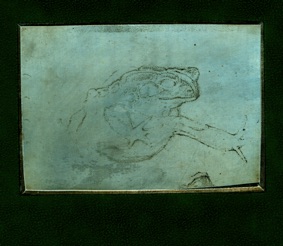
As a graduate student, I accepted money from a nuclear power plant to run the avian aspect of their environmental impact monitoring. I did so for two years, until I looked more closely at the experimental design. Upon closer examination and reversing of the statistical protocols, I realized that the long-running baseline study, which I’d inherited and which had been designed by others long before me – the very experimental design – was profoundly flawed from the outset. By reversing the statistical model much as one might reverse-engineer a captured enemy weapons technology, I found that the environmental impact study appeared to have been purposefully designed, so as not to generate statistically significant results. I could not keep taking their money and be party to this bad science. I was being used to justify their ongoing slipshod activities with all the radiation leaks and ongoing security breaches. That's a long story, but getting close to the source, one gains great respect for truly good science and loses respect for the many who assume postures of false and immodest skepsis by doubting everything that is inconvenient or problematic and thus simplifying their lives to a point that they also become trivial.
The generally accepted view of science as a rigorously materialistic dogma with clear-eyed realists holding the line against weak-minded wishful thinking is becoming a bit shop-worn. Those popularly held views about rational materialism are falling left and right as modern physics enters unstable ground that looks more like philosophy than it does engineering. Biology too is proving itself to be as innovative and groundbreaking as any other discipline. Meanwhile industry-funded studies that prove what they were being paid to prove are losing credibility across a vast spectrum of fields as people realize that things are not so self-evident and that smart people can selectively present evidence to construct misleading arguments in a variety of ways for a variety of reasons.
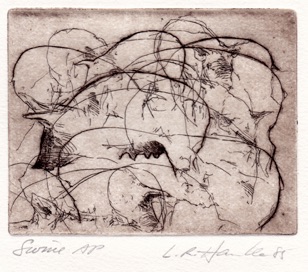

Science looks at contemporary breatharianism
Long-lived people and fasting
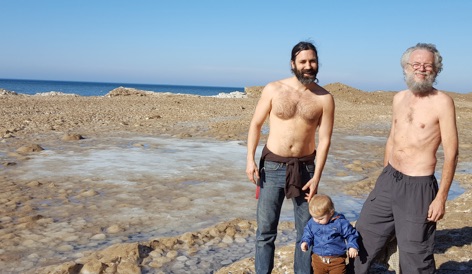
Me and two younger buddies – soaking up some mid-winter sun at Lake Michigan – though separated by ice-pack from the ice-cold water. I suppose I am pretty skinny - but getting by OK in the cold weather under only mild duress - or is that perhaps; mildly under-dressed?
Then I wish to remind you of what your own children can teach you - the things you once knew yourself. I realize that I will here launch into that, which sounds a bit sappy. Sentimentality is, however, based in healthy emotional responses that are just difficult to bear; precisely because they are reflections of another, less jaded reality – one, which we achingly wish were still recoverable. “Come on, get real”, is the very next phrase on your tongue, ready to let fly. But the pain of sentimentality is, after all, very real and it is of ideals betrayed. Recovering what you can, of these values from back before you were even born, will have to be a second-order innocence, regained as an adult who has experienced fallibility. This is, however, a completely appropriate desire.
Think back to your childhood and speaking with puppies or kittens – perhaps invisible friends. How unrelenting was the sadness being felt by that empathic child’s heart beating within your breast, when confronted with a crushed bug trying to drag its broken remains painfully off to some quite place to die in peace? It still has a pathos that can get to you – whoa – whoa, whoa. Let’s put a stop to that, before anybody sees the moisture gathering in the corner of my eye. As adults, we may have forgotten much, in our hurry to do what is expected of us. Even so, the pathos generated by empathy for the other – that profoundly compelling feeling, doesn't cease to be based in something real.
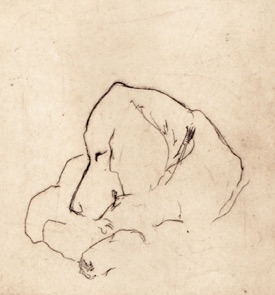
It is now becoming similarly apparent that the many brutal prison camps that are a hallmark of modern-day barbarity are also laboratories in which we have learned much about human psychology and physiology under extremes of duress. Many bits of information have only begun to come out, as the rest of us become ready to accept and digest them. Among those facts just coming out lately, is that while most people were being worked to death in the gulag and other such camps which were ultimately intended to serve as one-way destinations for ‘undesirables’ – not all die so conveniently or predictably. Certain people continue to thrive on starvation rations. Camp guards and doctors know pretty well how long prisoners can be expected to survive on any calculated regime of work output and caloric intake. Yet certain individuals live on for years as cohort after cohort of normal inmates arrives and dies out, to be replaced by the next batch and the ones after that. It’s an admitted outlier, but also real. Why?
And those kinds of adversarial physical regimes leave traces on people that go beyond psychology and into chromosomal changes as the body adapts for the benefits of future generations - apparently. Mechanisms of action are sketchy but acquired characteristics do seem to appear generations later, as is now being demonstrated in studies of historically documented rural populations undergoing famines in Holland and Sweden as well as Jewish holocaust survivors – F2 generations sure, but F4 and further down the line as well. It’s hard to be too attached to any speculative mechanisms of action at this early date, but the results are tantalizing and show how little we really know about the way genetics and natural selection actually function. Even our behaviors and exposure to toxins, pesticides and food additives appear to have repercussions in the very genomic structures being passed onto subsequent generations. Playing dice with our genetics and those of our food crops and livestock for the purposes of technical amusement and cornering markets for even greater profits is all the less excusable – realizing how little we know about how and when the malignant fallout from those pernicious experiments conducted by the unwitting sorcerers’ apprentices may yet appear.

I suppose that’s where the TED acronym comes in – standing for Technology, Entertainment and Design – the three spoiled children of Science, Literature and Art – using our skills and methods and applying them to profit-driven purposes of industrial utility. And I apparently ran afoul of the parameters of some implied social contract I knew nothing about.
I felt accused of a transgression, which everyone else apparently understood to be unspeakably wrong and grossly misleading – one which only I do not understand to be misinformed and dangerous to impressionable young minds. Therefore the inquiry and decisions were presumably conducted by ‘expert’ witnesses in a secret tribunal about me, while I was unable to face my accusers; unable to answer allegations that are not admitted to even exist. Strange, that it even bothers me, but it does – at least to the extent that a liberal arts college should be the very place where new and challenging ideas can be openly discussed.
Historically, I suppose I am in good company. Thankfully, they no longer reward our efforts, as they once did, with public burnings of us and our publications.
A colleague from the academic spheres – pontificating
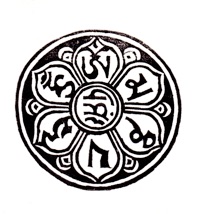
So then, imagine with me instead, a world in which we need not kill our fellow creatures to eat - in which we need very little and end up living as do the Lilies of the Field, who think neither of the morrow nor what they shall eat or wear. In a curious way I am here advocating for living a Christian life, as Christ himself addressed and lived it, though I am myself unwilling to reject other, non-Christian, wisdom teachings and think myself more an adherent of the perennial philosophy.
Breatharianism is not difficult, if you do not regard it as such. It cannot, however, be accomplished as an arduous task of self-flagellation or as a brute challenge, involving just the denial of earthly pleasures and then being worried sick about being apprehended on the wrong side of town backsliding with a burger or some ice cream when it all gets to be too much. You will not be entering a life of privation and doing without, but going over to something far more rewarding. To come out well, this must be a approached as a step forward into something alluring, mysterious and potentially life enhancing - into a life opening up before you as the next stage for you to step out upon. And remember that eating or not eating isn’t the point. This is what others, who are not actually involved, fixate upon. Learning to take your energy from the primary source is the main point. This is not strange or unknowable territory. You already take your energy mostly from that original source. You need only do so with greater awareness as you expand into the far greater potential that dwells within you, suppressed for too long, but aching to fully open up and blossom. This is all far more subtle than merely eating or not eating. Inquisitors looking to trip you up and gimlet-eyed lawyerly sorts, trying to catch you sneaking a morsel of food are not your friends nor are they honest critics with whom to carry on a dialogue. As with all things that matter deeply, I counsel going slowly and gently into this new phase of life. Stay private with your practice – for a good long time and do not, ‘cast your pearls before swine’.
Henri Monfort speaks with great love and a caring voice about these things and though I like hard science as evidence and seem to need some of that behind me to dispel my own insecurities, it is the softer voices (like that of Henri Monfort) and the love that informs them, which ultimately convince me of the correctness of a way of life, of an attitude – of the person addressing me. Monfort speaks of being kind and gentle with your soul and body. He asks if the first fish crawling out of the water onto land did so once and for all – irrevocably - or if it was a back and forth over years and generations, before becoming established as a land dweller. You owe nobody your explanations or excuses. It is your experience – not theirs.
Dare to be the child enamored of the wonder of it all. And the guardian angel you once believed in? What’s the harm? Go ahead and ask for help from guiding spirits or animal helpers – ancestors - perhaps Jesus. You may get answers from quarters you’d long given up on. I do.
You need not be alone, nor prove anything to those cold-eyed skeptics who can make anything decent, loving, beautiful or fun appear to be foolish or dangerous. Your world need not merely be an eternal competition defined by winners and losers. It can instead expand to a far larger stage and be a more inclusive and enjoyable place to spread your wings and fully inhabit.
Be kind to yourself and those around you. Cease resisting and instead learn to pass through this earthly incarnation, lightly, gracefully – as witness, as observer – sampling and enjoying the variety of experience if has to offer without excessively consuming things in all the many ways we do that. Enjoy being liberated from buying so many groceries, or from cooking and dishwashing as onerous and unending, Sisyphean tasks. Savor a modest portion of a friend’s cooking with the same pleasure that you might have once devoured half a chicken and move on. Everybody stops eating at some point – when they are stuffed to immobility and hurting or somewhat earlier as a graceful act of volition. Think of life as gracefully moving in the flow, and that is what your experience of this too shall become – for now, for a while, maybe forever.
Benediction
Monfort in closing his book, speaks of casting his words out into the world like a message in a bottle, to be bounced around among the waves until it washes up on some distant shore. No longer his, the contents of the bottle are yours, with which to do as you see fit. May this bottle wash up on a friendly welcoming shore as well and my words fall upon similarly fertile ground and be helpful to you, my friend.
Ladislav R. Hanka February 22, 2017
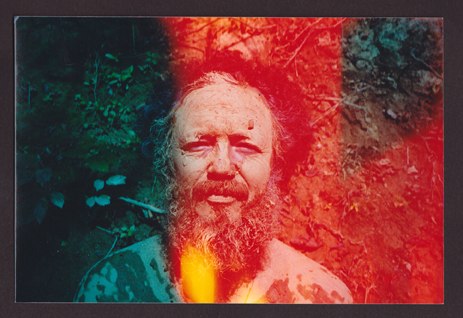
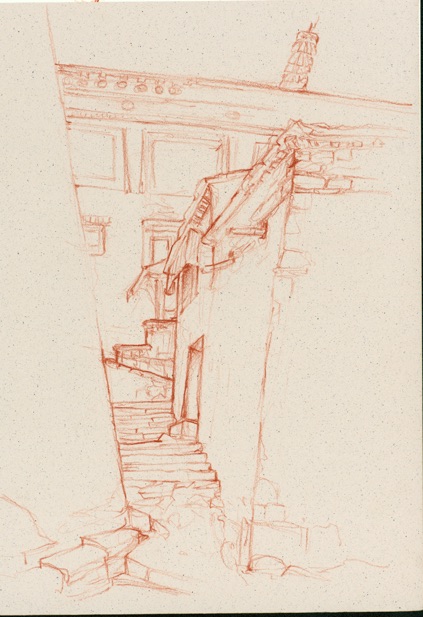
So then, now let us open the book on the many fascinating reports of longevity going way, way back – perhaps not as far back as Methusela, but back to the early days of newspapers and obituaries. Among the more curious records I have encountered, come from the compulsively comprehensive observations of Hilton Hotema in which he compiles anecdotal records of extremely long-lived people from obituaries published across the world. These have come from all continents and span several centuries – everything from the colonial Calcutta Times to local reports of old Paiutes in California who seemed to outlive everybody else.
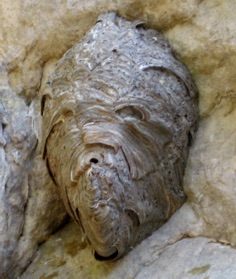
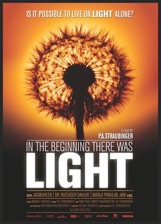
“Be regular and orderly in your life, so that you may be violent and original in your work.”
Gustave Flaubert

Leonardo, Linnaeus & Ladislav
Polygraphs taken from plants being damaged or even merely threatened with damage recorded unmistakable reactions – essentially indistinguishable from those of human subjects. Plants in the lab were clearly communicating among themselves and appeared capable of reading the minds of researchers preparing the experimental protocols.





And if that weren’t enough, there is increasing evidence that the human body can indeed absorb significant energy needs directly from sunshine through processes that are indeed something like photosynthesis.
In an article entitled; Beyond mitochondria, what would be the energy source of the cell? (Published in CNS Agents in Medicinal Chemistry, 15:32-41, 2015), Herrera et al, report:
“the chemical energy released through the dissociation of water molecules by melanin represents over 90% of cell energy requirements. Our finding about the unexpected intrinsic property of melanin to transform photon energy into chemical energy through the dissociation of the water molecule, a role performed supposedly only by chlorophyll in plants, seriously questions the sacrosanct role of glucose and thereby mitochondria as the primary source of energy and power for the cells.”
That too, is some strong stuff. No longer just 23% of one’s energy needs – but potentially over 90%.
From Xu et al in J Cell Sci. 2014 Jan 15; 127(Pt 2): 388-99. 2013, Nov 6:
“… the ability to convert sunlight into biological energy in the form of ATP is thought to be limited to chlorophyll-containing chloroplasts in photosynthetic organisms. Here we show that mammalian mitochondria can also capture light and synthesize ATP when mixed with a light-capturing metabolite of chlorophyll. The same metabolite fed to the worm Caenorhabditis elegans leads to increase in ATP synthesis upon light exposure, along with an increase in life span. We further demonstrate the same potential to convert light into energy exists in mammals, as chlorophyll metabolites accumulate in mice, rats and swine when fed a chlorophyll-rich diet. Results suggest chlorophyll type molecules modulate mitochondrial ATP by catalyzing the reduction of coenzyme Q, a slow step in mitochondrial ATP synthesis. We propose that through consumption of plant chlorophyll pigments, animals, too, are able to derive energy directly from sunlight.”
I am finding that food and eating are not such hard and fast things with obvious needs or rules attached to their use. It seems that the human being is subject to development all throughout life that is quite variable from one person to the next. Mother’s milk is the appropriate food for an infant and we do all eventually move on to solid food, yet we are not all weaned at the same age or even with the same sense of finality. Children come at solid food with quite differing levels of interest. I sense that there come analogous levels of developmental change later in life as well. Moving on to yet another level of maturation and absorbing one’s nutrient and energy needs directly from the environment would not give the lie to food and eating anymore than does eating solid food give the lie to a need for mother’s milk earlier in life. Everything about human nutrition, vitamins, minerals, proteins, essential amino acids, as well as the various food pyramids and metabolic pathways is as true as it ever was, but like the infant moving on in life, your needs and ways of satisfying them are also continually changing. Step back for a moment and consider how little the typical elder consumes and not in comparison with a young lumberjack, but with a typical middle-aged office worker having similar energetic/metabolic demands. Things change and the reasons are not always superficially evident.
I believe we are learning to negotiate a reality that is far subtler than one might imagine – one for which there isn’t yet much guidance beyond introductions or initiations. We are much like caterpillars looking at the life of a butterfly with trepidation and precious little understanding. Henri Monfort aptly compares the process of becoming a breatharian to a butterfly’s metamorphosis. Once you formally establish in your mind that by a certain date you will begin the process and that by another date you firmly intend to emerge and be taking your needs from Prana and not food, you will indeed come out of the cocoon a completely new creature with a physiology very unlike the earlier form of yourself.
Think back to what happens in the chrysalis as the internal organs and all else inside the pupating larva essentially dissolve and assume a liquid-like and nearly formless, gelatinous state for several days. The ensuing configurations of body parts are radically different and even include genetic changes. You will not immediately understand what is taking place in your own body, so do not expect the people around you to do any better. What is here taking place is no less than an evolutionary leap and an alteration of basic paradigms. Of course others will be concerned and even hostile about having their basic beliefs challenged.
Go easy on yourself and those around you. Do not think the process to be one of suffering through denying yourself the all-important foods you have, until now, enjoyed and relied upon. You’ll taste them again if that still seems important, but it really doesn’t matter in the big picture how many torts you eat over the years, cigarettes you smoke and shots of Cognac you drank in life. The experience itself is more important than is its reptition. Rather, when you begin, do so with the expectation that you are stepping forward into the embrace of a benevolent universe, where you’ll be in the midst of plenty, as Prana becomes your preferred source of divine nourishment – always there and eternally available. This is an amazing piece of freedom that is being offered – available for the taking. Like the butterfly emerging from its pupa, you’ll need to spread those new wings gently to dry and harden in the sun of Prana. You will from thence forward, be navigating and exploring a very new and exciting world – a terra incognita. And if you fall short of your own expectations, backslide here and again, relax about that and any other imagined shorcomings — for once you know how it’s done, it’s there encoded within your soul, much like riding a bicycle.
Life happens after rebirths and initiations. Those are memorable pivot points – like weddings – when you dedicate yourself and commit to something. However, the life we must learn to negotiate, after beginning to live as breatharians on our own, beyond the confines of a workshop or the guidance of a teacher, that life will inevitably include psychological and social confrontations that won’t be easy. Some of us are strong enough to charge out of the gates and never look back. Mostly though, we will live under the continual scrutiny of people who care about us, but who are also inspecting us under magnifiers while delivering well meant, but painful judgments on how we are living our lives. We must be easy on ourselves in that transition and indeed — be cautious about whose criticisms we allow into that vulnerable early development.
In a stressful situation and on a rough day, you may, (like Omsa Rohrmoser), still find yourself unable to extract all your needs from fresh air and sunshine, even after having thought that you’d made it past all of that cooking, chewing, swallowing and digestion. Monks in a monastery have plenty of collegial support and a far less stressful environment within which to calmly evolve. I am quite sure it’s easier to live food-free among the more accepting population of rural India or in my modest-sized, human-scale, home-town of Kalamazoo than any major metropolis. Living on my own schedule with a satisfying creative livelihood is clearly less stressful than working a demanding and perhaps even demeaning nine-to-five job with an overbearing boss and co-workers whom you dislike. Commuting across a metropolitan area via mass transit, pursued by advertisers and beggars while keeping an eye peeled for parking spots, muggers or con men won’t make that any easier. These are all things that will be coming out of the experiences of those who dare try this way of life and report back what their experiences have been – and we will know much more in a few years as others become capable of processing and even accepting this ‘new’ information.

Acqui Fruits: Central America
Pawpaw Fruits: Southern Michigan
Gan Den Monastery; Tibet
&
several anomalous guardians inhabiting the many rooms and hallways of the Potala Palace, with their flickering butter-filled cauldrons sending sooty little prayers continually drifting up from candle-wicks into the rafters, among the countless scrolls of ancient writings.
The monks appear to be very old – but then the altitude and sun do a job on one’s skin and I don’t speak their language to ask.

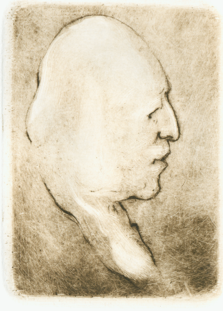
Carvings of three buddhas done by a street artisan at Gan Den Monastery, which I carried home and printed myself.
Endpapers from a hand-made book entitled Cafe Kabuki – a study of elders inhabiting the cafe’s of pre-revolutionary Prague


From the Book of Toads; in commemoration of the Amphibian holocaust in the year 2000AD while the world was enamored of a mere computer code glitch.
Papaya Fruit
Maharishi Mahesh Yogi
Peter Straubinger- Film producer & director
That is an amazing thing and it gives me hope for us all getting along some fine day. Yet think to yourself how often it seems that the tenor of a society is influenced by small numbers of people. Just a few moral individuals can, by their example, turn a society around to one where you need not lock your house or conversely; a small group of gangsters and thugs can divert the mass of otherwise decent, normal people to becoming a similarly mistrustful and fearful, thieving, self-serving, conniving and tax-evading bunch of gluttonous, slothful, racist, avaricious, opportunistic louts filling their days with television, drinking, gossip, backbiting and the inevitable offspring of these ways of fillings one’s day – violence. I suspect most of us have had personal experiences of setting a higher standard at some enlightened moment in our lives and being amazed at how quickly others have followed suit.
I recall once being lured into a ‘meditation’ group at college. It was led by an East Indian guru making the rounds in the early 1970’s who had a following in several mid-western college towns. My first experience being led to the master’s lair was powerful. He emanated an energy I could feel several city blocks away and I was excited to be a part of something so sophisticated, so much grander than dreary, hum-drum, hometown mid-America. Inside, there were no explanations – just the ‘activity’ of lying down for sessions of trancelike ‘meditation’. Hours passed like minutes and I can’t say I know what went on for those hours, but having no memory of what was taking pace inside me for that long became increasingly disturbing. I kept attending these sessions for some months and enjoyed the power that was in the air as a fly on the wall - anonymously. I was accustomed to being a studious, pencil-necked geek whom nobody much noticed and thought nothing of it. People kept interacting with the guru and many were invited off to his place in the country – especially the pretty girls. I just went to the trance sessions and then back to classes and labs.
After some months of regular attendance, the master noticed me and called me in for a personal session. That talk seemed far less about my spiritual development, than it was a thinly veiled examination of whom I know, what I own and what I might be good for. Things weren’t right and one day I just stopped going. No speeches. No grandstanding. Anonymous me, simply stopped appearing – from one day to the next. Curiously enough, the others started dropping out very soon as well and stopped signing over their cars and wills and possessions. The pretty girls stopped servicing the sleaze-bag realtors, lawyers and salesmen whose favors the guru required. I saw for the first time in my life that by my example, I did indeed hold some real power of moral suasion. I later heard back from others that they’d always regarded me as a barometer – one of those without a lot of flash, but just clearly possessing solid common sense capacities for discernment. When the last of that kind stopped attending, they too got the message and bailed. The false guru was eventually brought to heel by authorities on charges of immigration violations and financial fraud. But what really brought him down was something much like the Maharishi effect – the power of one unimposing little bookish sort, responding to the internal disorder he was feeling and walking away from that which quite simply, didn’t pass the smell test. Others took the cue and had the courage to follow their own internal compass until one day, the whole constellation shifted to another reality – like an ecosystem finding a new dynamic equilibrium around some new balance point with its own internal stability and capacities for withstanding new combinations of perturbation, distortion and insults to its integrity.
But now back to fasting. Long fasts have always been the norm for hermits, contemplatives, anchorites and saints, but this discipline has also traditionally required their being sequestered from society. As more and more people within ordinary social structures learn to go from fasting to taking their sustenance from light or Prana, this practice will increasingly enter into common public knowledge and become seen as just one of many things in that vast field of unrealized potential that does occasionally surface in time and three dimensions as a visible minority position in contemporary society. Rupert Sheldrake speaks of these fields of latent possibilities (which he calls morphogenic fields), becoming manifest as the world becomes conducive to their expression – as we become adequately conscious – or indeed, worthy. There is evidence for that sort of thing. That which was once impossible, becomes demonstrably possible and eventually the norm – when its time arrives. Henri Monfort addresses his own practice in similar terms and speaks of it being easier today to change over to living from Prana, precisely because your very cells already have the programming there dwelling within them, thanks to the Unified Quantum Field and the many people like himself, who have lived this way before us - and done so for years - making of that mere potential, something that already exists and exerts its potency.
The Maharishi Mahesh Yogi came to the west in the mid sixties to spread consciousness. He set up an effective system of teaching Transcendental Meditation and by the mid 1970s, his followers were numerous enough to put this technology to a test. They concentrated on placing enough master meditators in several major cities of the world, until they achieved a calculated one percent of the population meditating. The result was that crime statistics fell in statistically significant numbers. The small number of people generating calmness or coherence of thought through Transcendental Meditation in those selected cities throughout the duration of the trial, constituted a critical mass that somehow influenced enough others to stop beating, robbing, stomping, raping and killing their fellow citizens in adequate numbers, to have a measurable effect.
Tibetan Buddhists mantra (prayer), Om Mani Padme Hum, an evocation of wisdom & compassion.
Portrait of my own boyhood dog, done on the last day of his life when he had reverted to something very much approaching the appearance of a puppy – coming full circle.
The vegetarians I have known became that way when confronted with the pain of a slaughterhouse, hearing the doomed animals, being herded to their fate, pathetically bleating and crying over what they already know is to become of them. Farmers tell me that pigs love going for a ride in the truck – until it’s the last ride, when they are being taken to slaughter. They know and must be forced into the trailer on that fateful day. Fear not. I will release you from all this in a moment, but there does come a moment when you can no longer pretend that you do not know. The sadness of it all is real and just too much. You stop suppressing it and just admit that it’s getting to you. I won’t be a part of this any longer – for how am I so different from the sheep being led to the killing floor? You’ll find your compromises with the real world, as we all must, but it’s all a more conscious choice from that point forward with eyes wide open – and of course, with love in our hearts.
Black Locust Blossoms
The activities and equipment of a medieval alchemist’s laboratory
Do I really, truly – not eat?
Beyond science and into my own speculations
My own experiences with the cessation of Eating
How did all this happen?
Why on earth would I do such a thing?
Other researchers report that human beings, appear to have the capacity for taking much of their energy directly from sunshine – directly through their skin.
We know that the surprisingly limited human genome is under a system of controls that may well be more complex and important than is the basic configuration of nucleotides themselves. The human genome itself is not so much different or complex than is that of corn or fruit flies and thus our basic genomic structure may have a great deal in common with all life on this planet - whether apes or fruit flies, perhaps even GMO corn. What we do with that genome in expressing and suppressing various aspects of it and whence come the commands, may well be the more important matter, differentiating us not only as a species, but even as individuals, evolving at our own pace from one another. Lamark was not necessarily that far off the mark, nor was even (God forbid) Boris Lysenko. Who knows how all that functions? But there do seem to clearly be genetic changes that take place when people are under long-term stress or then again, perhaps it is really the epigenetic expression of those basic human chromosomes that is more affected. Perhaps we are here running up against one of the significant interfaces between mind and body? Not so far-fetched, if you’ll recall that the life force or spirit does appear to have measurable mass. When dying people are being weighed, there is a detectable (if minuscule) weight change at the very moment of death – and it is not random or widely variable, but always a slight diminution. In 1988, Noetic Science concluded that the human soul weighs 1/3,000th of an ounce. The experiments were carried out by East German researchers who weighed more than 200 terminally ill patients just before and immediately after their deaths. In each case the weight loss was exactly the same – 1/3,000th of an ounce. This is approximately 0.01 gram.
Science is pretty cool these days with mind being a non-local phenomenon and yet, thoughts do seem to come to us as commands routed through a neural net and the brain is apparently its grand central station and clearing house. The brain is still composed of tissues – clearly physical and localized. Where do the commands come from? If the locus of purposes and intent that drives it all is without actual location, how does the interface between physical and non-physical function? How does the transfer actually happen? Is it all in that 1/3,000th of an ounce – or is that still something like a divine modem or a catalyst which is still on this, the material side of the divide? One begins to reflect on medieval models of homunculi and the Hindu picture of turtles standing upon yet more turtles holding up the earth – and more turtles holding them up as well – turtles, turtles and yet more turtles, all the way down. Where does it all begin or end? It sounds like a silly joke, but then again, things being finite is as unimaginable as is their being without a beginning or endpoint.
Life and consciousness appear more and more to be universal attributes of all matter and non-localized phenomena. Recall the paradigm-busting work compiled by Peter Tomkins in The Secret Life of Plants first published in 1973. Here he chronicled the research being done with consciousness in plants and even fertile eggs.
Tern Nest: Lake Michigan
We learn a lot from the extremes of human behavior and adverse conditions. Imagine what the residents of deserts and arctic tundra know about getting through conditions most of us would never stand a chance of surviving. The biggest advances in medicine tend to go hand in hand with the greatest need – when modern industrial warfare inflicts horrendous wounds that require new ways of working with the calamitously traumatized bodies and minds that ever more efficient weaponry causes. Post Traumatic Stress Disorder never got much of a hearing until recently. Traumatized soldiers don’t speak easily of this, because they encounter disinterest and even disbelief. Quite reasonably, they fear being thought simpering, self-pitying whiners or even cowards. We get the information from those affected, as we are ready to accept that it might be real.
The other side of the human energy equation and the opposite of starvation is also of interest. People with serious weight problems typically complain they eat hardly anything at all or that they regain weight almost immediately after dieting. I posit that these complaints should be taken at face value. I suspect we all take the vast majority of our nutrition and energy needs from our environment directly – as do the demonstrated inediates. Some merely do so more effectively than do others. Those with more efficient digestive systems may actually need less food than they’ve been led to believe. Restricting food intake by dieting may, for these people, be driving them inadvertently to becoming even more like breatharians and deriving yet more of their energetic needs from the non-food sources in their environment. That process would then logically compound the problems associated with returning to their prior eating habits. Having even less need of caloric intake, they would tend to deposit the redundant calories at yet increasing rates in adipose tissue (fat). Our stressful social structures may be more at issue than all else. When life is satisfying, balanced, non-threatening, stimulating and ultimately health-supporting, appetites may be more natural and extracting energy from actual food less important than it is to an organism undergoing unmitigated fight or flight responses that come of the insidiously debilitating anxiety that long-term social stress induces.
The hundred-monkey principal comes to mind and the, ‘oh so many’ other ways that change happens. It has to start somehow and somewhere and then it is no longer implausible, because it simply, demonstrably, is.
The longest-lived people in India have worked out methodologies that help them get by and they look co-incidentally, a lot like stress reduction instructions. They include fresh air and sunshine on their skin, lengthy fasting, meditation, sleeping with open fire and running water, sun-gazing and many other fairly simple practices, available to any of us. There is much that can be recounted from the literature and everything seems to inter-relate, but where I am heading with all this is that, it seems we live in a universe that, if we give it half a chance, is not inimical to our needs. We are actually well adapted by nature to the place we inhabit and typically get most of our needs directly from sources we don’t even acknowledge or know about. It happens much as a potato gets the energy it needs from the sun to fix molecules within the atmosphere into sugars and proteins and all else it requires for survival.
This train of thought brings us inevitably to the Maharishi effect – that it takes only a small number of people, thinking congruently to change society and the way others think and behave. The outer ends of the bell curve or Gaussian distribution is where we must indeed look for change and new ideas while the inner aspect with its broad bell-shaped curve is composed of the vast majority who make trains run on time and who keep the system essentially together and functioning with relative competency much as it always has. Fortunately it doesn’t take too many of those round pegs who seem not to fit in the world of square holes to have a profound effect, for without those crazy idealistic statistical outliers, we’d just have the same resource wars, ecological disasters and good old time religious wars as ever – over and over again.

And the Spanish noun, sueño, is just as easily translated as ‘dreams of reason’, which I prefer and think was more my deceased colleague’s intent. I have often found that I know what a long-dead colleague means by their work far better than do the historians - because we’re connected over the centuries by a long, silver cord of living kinship.
Is not the dream of reason the very place from which ideas come – when the monkey brain ceases its chattering and we are allowed a blessed rest? The grand cosmic comedy of all that has been and ever will be, comes out to play in our unconscious minds when we finally drift off and cease calculating our advantages. Where does the poetry of Blake or Rumi find its impetus? From whence the wonderment of a child over the delicacy of a dragon-fly’s wing – who awakens his parents with concerns over whether spiders get cold feet at night?
I am an artist and a lapsed scientist. These are disciplines that attract spirited free-thinkers daring to try on for size that which appears implausible or questionable to the normal citizen. We are the guinea pigs who experiment on ourselves and expand the realm of that which might be possible. History is full of visionaries who found revelations at the end of an improbable road, after exhausting reason and setting foot upon less stable ground – from Bresdin to Doré. Blake, Walt Whitman, Josef Váchal, Morris Graves and Fuesli also come to mind – but then so does Kekule, awakening with the vision of the structure of the aromatic carbon ring in his barely conscious mind – the vision appearing to him as snakes grasping their own tales. Charles Darwin caught the vision amid the vertiginous adaptive radiation of Galapagos Finches. Karl Linnaeus too, facing all the richness of the earth, sensed an order behind it all – enough so, to develop a system of binomial taxonomy which, three centuries later, we still find useful.
FRANCISCO DE GOYA Y LUCIENTES
Spanish, 1746 - 1828
The Sleep of Reason Produces Monsters
plate 43 of Los Caprichos
etching with aquatint, 1799
The dreams of reason indeed; when the scholar finally dares to abandon himself to the dream and hopes to awaken as a castaway, washed up on the sands of a more forgiving shore.
Beauty and art are the places where the sensual and rational minds within each of us dwell and co-evolve. As a naturalist, as well as artist, I have learned to meld those two oft-competing minds into one. When knowledge, science and the dreaming shaman join forces, beauty comes gushing forth from the deepest fonts of the human soul. Where one dares tread, a second soon follows and a pathway is established. It takes but a few to begin that process.
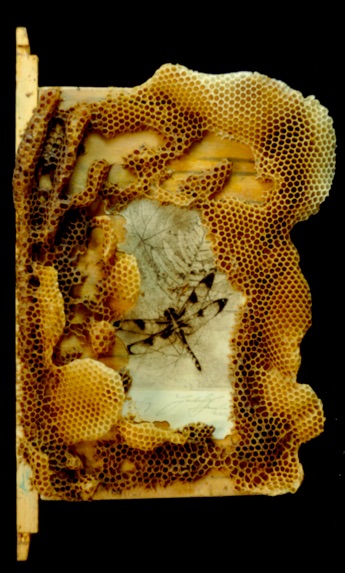
Dragonfly - an etching on which my honey bees have had their own play-time.
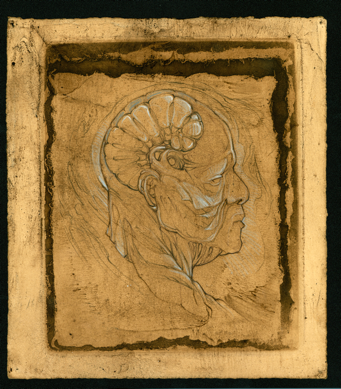
Meditating Scholar from the Potala Palace in Lhasa, Tibet
Meditating Lama from the Gan Den Monastery inTibet
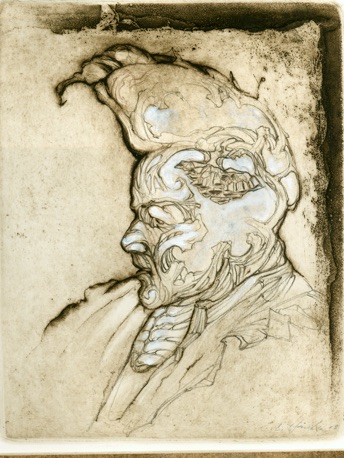


It was Goya’s aquatint of the artist/scholar asleep over his work that brought the expression, ‘Sleep of Reason’ into popular vocabulary. The full epigraph for capricho No. 43 reads; "Fantasy abandoned by reason produces impossible monsters: united with reason, fantasy is the mother of the arts and the origin of their marvels."
This work is most often interpreted as an eighteenth century apotheosis to light and reason - the awakened mind overcoming disorder, while the sleep of reason is a breeding ground for irrational fears and superstition – for monsters. Goya, however, lived through the depths of the enlightenment and age of reason, nearly falling prey to the inquisition himself. He knew full well what reason hath wrought on his countrymen by way of the French Revolution, of Napoleonic conquests, inquisitions and the betrayals inhering in civil war. We still live uneasily with chimeras spawned by that age of reason. Many of us yearn for a more organic life – one which finds a gentler accommodation with the other creatures of this world and the dream-world beyond.
Proctor of the Sutras
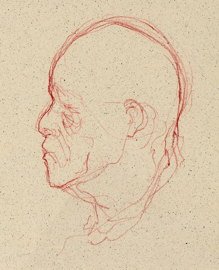
Guardian at The Potala Palace
Greeter Monk at the Potala Palace – Just like Wal-Mart - only different in all significant matters
Toad peering into the void – into its future
Ancestral visions appearing in the medieval scriptorium
Nowhere else have I encountered such evident compassion and joy bubbling up from deep within. The beauty of these saintly elders within monasteries demanded that I take out pencil and paper and have communion with them - often with a cup of tea enriched by rancid Yak butter and always a profoundly natural and unselfconscious smile.
Myself gone feral
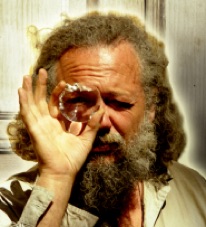
These obituaries include improbably old veterans from wars long forgotten who’ve been collecting benefits forever. Illiterate slaves with no documentation from the barrier islands off the Carolina’s get mentioned as do highly literate herbalists in China and otherwise ordinary widows elsewhere who‘ve outlived several husbands. And so it goes. Hotema simply took these obituaries at face value and compiled the mounting evidence. There have apparently been hundreds of people recorded as having lived to ages upwards of 120 years and quite a few who appear to have survived for several centuries. Among that extremely limited portion of the general population, it is apparently not that unusual to grow third and fourth sets of teeth. These extremely long-lived people also tend to have a history of periodic fasting – often extensive and rigorous – though most of them simply appear to be anomalies, about which little is otherwise known.

So then, Black Swans: How about the many people of myth and legend who are said to have lived forever and a day - the biblical patriarchs - Methuselah? We are always reading apologetics for why people of the past got it wrong and confused months with years (or something equally far-fetched) to explain away the inconvenience. I tend to think they knew what they were saying. And the Vedas? Much the same. All the tales of ancient saints in the Himalayas whose longevity is always closely associated with a simple life of meditation and fasting? What if the people who report this, actually do see what’s in front of them (much as do you and I) and have reported this correctly because they not only have little reason to lie, but every reason to leave an accurate record in holy writings for which they answer to a higher authority than mere human law?
Me - as the intrepid explorer
of Terra incognita
Omsa - Yowsah!

And of course it is all here today and gone tomorrow – all illusory, passing fancies, vanity. Enjoy the moment, doing no harm, sharing what you have with fellow travelers, savoring the sunrise, the morning dew and passing through.


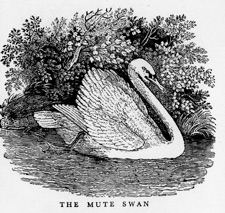
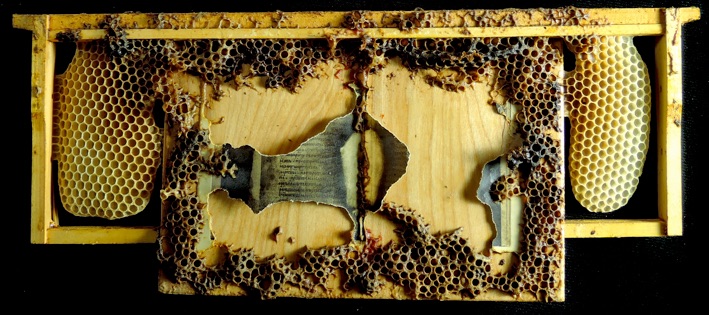
And here we come to the end of the olden days and literature written in strange, foreign scripts and enter into contemporary practices and science. What follows will stray a bit, but is also based in my having conducted the experiment upon my own physiology – what I know to be true, because I’ve been there and done that.
There is, however, always that Black Swan view of things, which one occasionally needs to assume, if discovering new truths and that which is more than mere confirmation of the already known, widely presumed or self-evident is of any interest. It only takes the discovery of the first Australian Black Swan to disprove the earlier supposition that all Swans are white. We must at some point open our eyes – and when presented with adequate evidence, begin the process of opening our minds to the possibility that we really are seeing an evolutionary advance and thus, the exception that disproves our cherished rule.

The Contemporary Scene of Breatharians & Indeiates
It seems counterintuitive and implausible, that this divergence from the human norm should be even remotely possible, but that is the way with what we’ve learned to take for granted - without questioning things that just plain and simply, are what they have always been and always will be – biology – facts of life. We don’t entertain the possibility of an exception to rules of life that seem self-evident. After all – ya gotta eat, right?
Purported inediates from among Catholic saints have been rigorously examined by church authorities, as have saddhu inediates by Indian medical authorities. Where this testing has been done, some at least, were found to be demonstrably subsisting on something other than food and water in ways that the examining scientists confirmed, but with caveats, that they could neither explain nor understand how it is possible. These studies now also include those conducted by well credentialed practitioners of contemporary western medicine – in Switzerland, Israel and the Czech Republic. Several well-tested breatharians have been subjected to severely rigorous protocols – in complete isolation, without access to fresh air or sunshine. That regimen itself, should have caused insurmountable stress to most anybody trying to stay reasonable calm, psychologically composed and physiologically balanced - rather like having a gun pointed at you with the demand of demonstrating an erection for the assembled press corps and cameras – now! I don’t understand how these people could possibly have performed under those conditions and yet they were undeniably, expending significant energy without caloric intake obtained in any ordinary way. Several of these advanced masters also required no water.


Active breatharians who actually live that life may be quite numerous on the basis of all those who have undergone the courses or there may simply be a significant population of those who’ve taken a workshop, learned the lessons, had an otherworldly experience and mostly gone back to life as usual. There may indeed be relatively few who have actually maintained the discipline for years. Once the mutual support network of teachers and planned activities is withdrawn and people return to society, the rate of falling away is clearly large – perhaps overwhelming and inevitably so. But then again, that too can have been a valuable experience in one’s life – whether one stays with the discipline over the long term or chooses to move on to other life experiences.
Still, there are self-proclaimed and well-confirmed, long-term, breatharians. Some of them are quite visible – maintaining blogs and publishing on their activities. Some are even well-credentialed scientists and physicians. Several of those have submitted to rigorous testing by western medicine.
Breatharianism is clearly a tantalizing outlier of the human condition, which fascinates many, but is also not without detractors. Those detractors mostly seem to be people with little more to offer than their personal refusal to accept that, which doesn’t correspond with their beliefs. They repeat the same well-worn criticism that this isn’t scientifically possible and people must eat or slowly wear out and die. No better evidence seems to be forthcoming from these critics nor a recognition of mounting evidence to the contrary.
And here is a typical cross-section of the deniers - because it’s always more fun drawing crooks, scamps, rag-pickers, beggars, clowns, trolls, bozos scallywags & con-men, than any goody two shoes typses.
Scripta Glagolitica: etching embalmed by Honey Bees
Breatharianism seems to be among the many unusual exotic phenomena of another world, with little more than an oral tradition to lean upon and a history of obscure saints somewhere far away as a lineage. And yet today, there are many more individuals abstaining from eating than ever before. They are not from just the above categories of peculiar and distant saints living up to impossible standards of perfection. They are clearly of this world and have learned to find their nourishment elsewhere than the dinner table. There are thousands of people, much like yourselves, who are breatharians and who carry on otherwise normal-appearing lives – and that now includes me with this published testament.
There are at this juncture, even workshops being taught on a regular basis – there to help any of us common working stiffs, who are hardly saints, who do not aspire to stigmata and who do not have servants or a monastery to fall back upon. Tens of thousands have purportedly gone through this training and some have subsequently stayed with the discipline for years. There are methods of changing over to extracting the necessary energy for sustaining life elsewhere than from food and they do indeed have their adherents and teachers with established track records.
Wood engraving dedicated to the
diabolic dangler of temptations –
and self-doubt
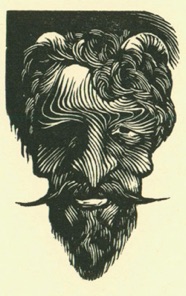
Thomas Bewick

Duccio di Buoninsegna Madonna ; Siena
The Borromeo Madonnna
The teachers of breatharianism appear to be otherwise normal and decorously behaving people, who publish rational sounding accounts of what they do. They do collect fees for their workshops, but typically, these are not extraordinary amounts. I see nobody getting rich or misleading others about what is taking place and thus see no reason to question their motives. These teachers now have a body of knowledge based in the experience of having collectively initiated something like 50,000 people to breatharianism. That is a number I often see repeated – admittedly self-reported and without much documentation, but a potentially valuable database.
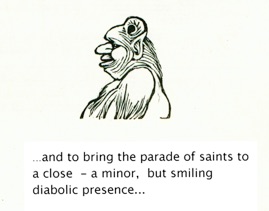
I’ve also read accusations (often quite vitriolic) from the same critics, that the teachers are criminals who should be held accountable for misleading people into dangerous practices – that some practitioners even die as a result of having undergone the 21-day course. These criticisms, however, appear to all be traceable to the same three deaths. No more than that in a population said to number in the tens of thousands.
Any population of tens of thousands of people will contain unbalanced individuals who fail to act responsibly or who simply run into a spell of bad luck. Any population the size of a modest-sized town will have a describable age, sex, health and class distribution with a commensurate rate of births and deaths.
I also know a child who doesn’t eat, but for different reasons. He was born with a dysfunction of the intestines, which simply do not absorb food and pass it through nearly unchanged. The child must be fed intravenously or starve. He can eat, but simply derives no value from it. He will nibble on food occasionally and things do taste good to him, but for the most part, he too, seems to find food and eating a bother. I wonder if such children could be forerunners of what shall some day become commonplace – perhaps the norm – as they go from an early death sentence to the travails of intravenous feeding today and some day perhaps, with proper guidance, to deriving their sustenance from the primal source directly.
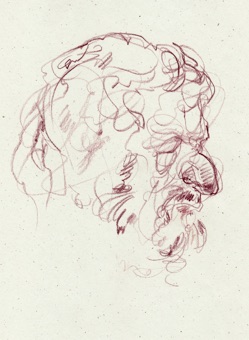
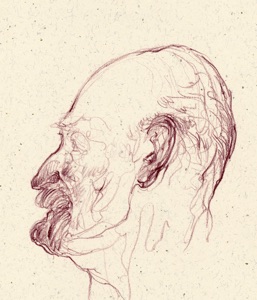
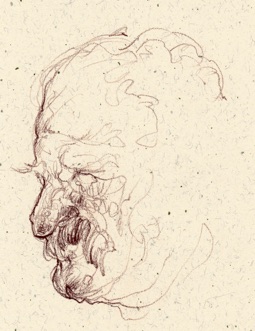
We all know that this practice is an exception to the norm and the point is not what Joe Six-pack thinks about that; but is it real? Can we believe these assertions? Are they based upon reasonably acceptable empirical evidence? I am writing here to testify that I too, have found it to be so. I base that assertion in having entered into the most intimate of all experiments – under my own control, upon my own physiology and over the course of a time period lengthy enough, that under ordinary circumstances, I should not have survived.
Hunger is itself soon mastered and falls away as a problem. I feel nothing like I once did after a hard day’s labor and wanting to chew off my own arm from the need to eat. Quite the opposite. I feel seductively problem free – deluded into thinking myself a master, which I am decidedly not. Like the former addict who lulls himself into thinking that the taste of a nice Cabernet or cigarette could surely do him no harm, those seductive tastes of wondrous foods have that same potential to act as the wedge that takes us back to eating as much as ever.

Teachers of breatharianism are quite open about the low long-term success rate and seem to all be reporting very high rates of recidivism. That too speaks against them being hucksters promoting a boondoggle. It hardly seems a savvy advertiser’s ploy to advertise a low rate of success. Those staying with the discipline appear to be only 10 – 20% which I find believable, as the urge to eat is powerful. It is also curiously subtle, rather than overt. In that way only, I would liken the return to eating to the backsliding of those with addictions to tobacco and alcohol.

Let us now open the book on the many fascinating reports of longevity and its association with extensive fasting. Going way, way back – not as far back as Methuselah perhaps, but to the early days of newspapers and obituaries. Among the more curious records I have encountered, are the compulsively comprehensive observations of Hilton Hotema. In Man’s Higher Consciousness, first published in 1962, Hotema compiles anecdotal records of extremely long-lived people from obituaries published all across the world. These have come from all continents and span several centuries – everything from the colonial Calcutta Times to local reports of aged Paiute Indians from the gold rush days of California who seemed to have been outliving everybody else.
Working for the NASA space program in the 1960s, Dr. Paul Webb developed a full suit calorimeter, allowing fellow-scientists to evaluate the energy expenditures and requirements of their astronauts with accurate measurements much more thoroughly than had ever been possible before. That led eventually to his questioning the universal validity of Calorie Theory as a basis of human metabolism.
Dr. Webb’s revolutionary findings were eventually published in 1980 in the American Journal of Clinical Nutrition, and point to a crucial discrepancy between the theoretical amount of energy produced by metabolism (the results of indirect calorimetry measuring the consumption of oxygen and production of carbon dioxide) and the actual amount of energy produced by the body (measured by direct calorimetry). This discrepancy was up to 23 percent, (the so called "unmeasured energy"), meaning that in some cases nearly a quarter of the energy produced in the test persons could not be accounted for – no explanation. 23%t is hardly a negligible error of measurement or a mere outlier.
It doesn’t end there though - "The greater the food deficit, the larger was the unmeasured energy".
That sounds suspiciously like saying that we are capable of pulling from other sources – as we need it.
So then – 23% most of the time and a lot more in a pinch, maybe everything. My own free associations take me to tales of mothers moving impossibly heavy objects to save children or soldiers under fire achieving extraordinary feats of physical strength – under ambush and escaping sure death – feats which they can’t later replicate for their buddies – and not even come close. We seem to be so much more than meets the eye. When the chips are down and the need is there, we somehow get from here to there, without necessarily knowing how that might have been done.
You’ll find some more discussion of these very matters in Peter Straubinger’s website & blog:
Now recall with me that Milarepa, the eleventh century Tibetan saint, mentioned in the first pages of this manuscript, turned green from all the nettles he ate while living in a cave. He also purportedly survived for a decade, eating nothing else. Perhaps there is actually something to all these anecdotal reports. And bear in mind that ‘anecdotal’, is such a dismissive expression for having been reported by somebody not of our own kind, nor using our vocabulary and not performing double blind protocols on aunt Hattie, but simply telling us what happened to her. It’s still data – if not necessarily calibrated.

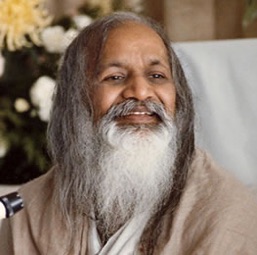
My TEDx Talk went well and was received to great applause and then censored. All the other talks that day were published to You Tube and mine was not. No refusal. No communication. No answers to my inquiries. Not a single word. I was just cast adrift with the feeling of being somehow inappropriate – an embarrassment – a Pariah or a Leper who for all his efforts, deserved not so much as the decency of an answer.
We all die. The point must be to ascertain whether this dynamic among breatharians is significantly outside the usual demographic norms. I see no such evidence being presented.
At this point there have even been healthy births among breatharians. At least one such mother in Ecuador speaks openly of having conceived, gestated, given birth and nursed her children without eating. She had medical attention all throughout the process and her vital statistics were completely healthy at all times – substantially better than average. Her children too, are healthy and said to be unattached to food – meaning they nibble at what tastes good, but get bored and soon stop. Eating just isn’t a normal part of their lives – a bother, more than anything else. A link to an interview with the parents follows:
I’ve heard from others that this is hardly uncommon. Apparently Rupert Sheldrake was censored by Ted Talks, as were quite a few other prominent thinkers and there are now complete websites dedicated to censored Ted Talks. The few such talks that I have called up on-line tend to be head-and-shoulders above the sanctioned talks - at least more novel and challenging as content. Nothing new under the sun I suppose, when it comes to keeping the public safely insulated from new ideas - right?

Discussion
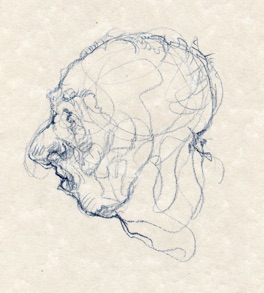
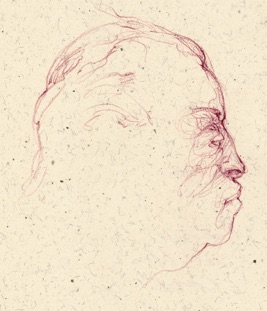
For those interested in looking up some teachers, here are three of the better known teachers running workshops. Start at these websites and you’ll find a great deal of worthwhile information which will quickly lead you to other sources:
http://nourriture.pranique.free.fr/english_index.html
The Israeli breatharian, Ray Maor has also seen fit to have himself placed under observation by a physician who was the head Cardiologist at the central Tel Aviv Hospital. The senior MD was also a decent man and cared deeply about Ray - enough so that he treated this ‘test subject’ fairly throughout this procedure and allowed his integrity to remain intact, whatever the outcome. They conducted the complete proceedings under closed circuit television cameras, recording every second of the experiment at a location paid for by a popular television program with their own public reputation on the line. It didn’t hurt that there was also the public spectacle of a one hundred-thousand dollar bet riding on the outcome. An Israeli real estate tycoon didn’t believe it possible to fast completely without food and water for eight days and not lose weight, so he urged Ray to, ‘put up or shut up’ – and simply show that he can do it and earn his money or publicly prove himself a fraud. The businessman was also practical enough in his outlook, that he thought that if this is possible, the public should know about it. Now they do and we have incontrovertible publicly available evidence that a healthy young man in the prime of life stopped eating and drinking for eight days under extreme scrutiny and didn’t lose any weight, have any questionable blood chemistry or look any worse for the experience. Ray Maor has published a book about this experience entitled: A Year Without Food: Proven Energetic Nourishment . A film about the process is also posted to You Tube at several locations on the web, including Ray Maor’s own website at http://raymaor.com/.
Doing without most all the food I might have eaten is really not a pathological level of self-denial by which I am unnaturally punishing myself or suppressing my own human nature. I feel instead that, like Dr. Werner, I have taken a positive step in life, which is opening other doors to me. Food still smells good and is clearly one of the blessings of human life on this beautiful green earth, but I am finding that it simply isn’t necessary. I have progressed from an obligate dependency on food and eating to that being a choice from among the many sensual pleasures available to me.
I still see value in the culinary arts as I do in anything cultural, taken to a level of subtlety and aesthetic appreciation. Table culture - the love of communion and breaking of bread, sharing of a meal taken among kindred spirits. What could be better? These are all among the things that lift us from the status of brutes to a culture. These things do not come into question by assuming a position of finding ones needs being met by Prana. We may, however, wish to re-examine just how desirable it really is to be supporting agricultural monocultures that are kept limping along by vast amounts of subsidized biocides for the purposes of making fast foods, which only do damage to the consumer and demean the employees, for little more benefit than increasing the profits of a needless and ultimately parasitic faux-food industry.
I’ve been fasting periodically and meditating for much of my adult life (I am 66 years old) and found myself extending those fasts to several weeks at a time – occasionally to as much as a month. I am rewarded for this activity by feeling in control of my body, shedding some of the excess fat that winter seems to deposit on my frame and enjoying the ensuing time period of heightened sensitivity. The Swiss academic and breatharian Dr. Michael Werner, wrote about his own similar experiences in a book entitled ‘Life from Light’ with journalist Thomas Stockli. He claims he is now healthier, stronger and just plain feels better. Not eating is simply the price he pays to enjoy those benefits. For him, it’s a discipline much like getting regular exercise and whose worth is demonstrable and thus by now, beyond question.

Some of my own favorite food –
Boletus edulis
Cepe – Steinpilz – Hřib dubák

I eat infrequently, but when I do, it is at a level that could not sustain life without my receiving nutrients and energy from another source – from Light, Prana or God. After four elapsed years, that is a meaningful experiment in alternative living and worthy of mention. In that time I detect no evidence of atrophy beyond modestly reduced muscle mass – which tends to happen with age, even if disguised by layers of fat. My body looks skinny and that may or may not fit with peoples’ idea of a healthy looking body – but in truth, large amounts of decorative muscle mass are not necessarily healthy nor are many other currently popular standards of beauty. These rarely correspond closely with actual health.
Recall how little unnecessary mass wild animals carry – how skinny are monkeys at the zoo swinging all day long on pencil-thin arms – and yet they are indeed, ‘strong as monkeys’. Another example that fascinates me is that of a young autistic man I know. He never developed past an intellectual level of approximately 7 years of age. He rarely leaves the house or sees the sun and he has no use for real food. He simply will not eat anything but sugar and junk food and his parents can shout themselves hoarse, but they can do nothing with him. Food either tastes good to him or it is of no interest. He doesn’t know how all that is supposed to work. He just likes what he likes and doesn’t do what he doesn’t enjoy. The boy has, by now, outlived one of his parents and yet has never been sick a day in his life - without exaggeration. Though he gets no exercise at all and has limbs like chopsticks, he is stronger than you can imagine possible. He challenges me to arm wrestling contests and though I do let him win, I must actually try pretty darned hard in order to be in control and meter the theatrical progress of our game. Nothing is as a simple as it appears to be.
We are living at a time in history when virtually all food is adulterated with vast amounts of increasingly pernicious biocides used in its cultivation and which is often corrupted with the addition of cheap fillers made from Genetically Modified crops whose effects on the human physiology and genome are mostly being withheld from the public. Where they’ve been tested by independent labs, these food substitutes are being shown to be (at best), highly suspect. The generation that grew up with a clean environment and food supply is fast disappearing and future generations will apparently all have vast amounts of pesticides and herbicides in their tissues, carried there from far away, whether they live in a country with responsible laws protecting the public or not. My health may be open to discussion, on the basis of looking good for my age or not, yet avoiding the consumption of toxic substances consciously and promiscuously introduced into the general food supply without so much as a public discussion - that too has its clear attractions.
Do you recall what they used to call Organic or Biological Food back in 1940? Food. It may not have been as cheap and abundant as is the adulterated food today, but it also didn’t cost extra, nor was food that is clean and free of toxins, beyond the means of the poor.
Getting back to my body though; it is not in any obvious way shutting down the periphery, sleeping more, nor resting to husband its energies for vital functions – as happens to starving people. I have more and not less energy. When I do eat something, it goes through perfectly normal digestive processes. Meat, cheese and sardines still smell bad when passing gas. A grapefruit does not. People mentioned twice early on, that I smelled badly, but it lasted very shortly and there has been no evidence of the ‘acetone’ smell or taste of ketosis, nor have people mentioned it in the last few years. I merely look thin and continue to generate the normal smells of sweat after physical exertion. I do much of what I have done all along and see no evidence of my taking nourishment from Prana (instead of food) having any negative impacts upon my levels of activity. I have more energy and sleep less, though my sleep patterns are curiously far less ordered than they once were. I can go to sleep most any time and wake up again in several minutes or hours and start working again at pretty much any hour of the day or night. I tend to take short naps in the late afternoon and occasionally at other times, but my total sleep time is a fraction of what I once required. I will also admit that I have less interest in the superficial aspects of socializing.
Results of the Experiment – the Nitty Gritty


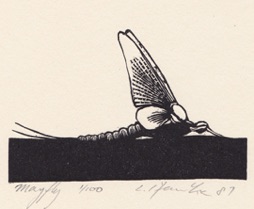
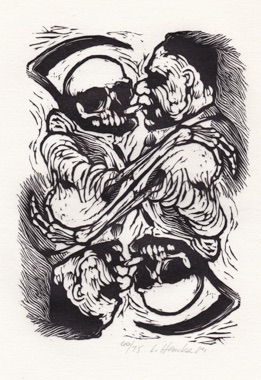
I suffer fools and foolishness less gladly now than when I was still eating – though I try not to make that painfully evident. That seems to be a part of the territory of age and the onset of wisdom – realizing that there is an endpoint to this life and a limit to the amount of time one wishes to devote to the trivial. One should be evolving and arriving at some form of wisdom, before the grim reaper comes calling and there is only time left for regrets. So, with that punctuation point of having no patience for fools , let us move on from me and this discussion of my own experiences and place that into context within the contemporary breatharian scene.
From the Great Arcanum – Death Visiting the Usurer
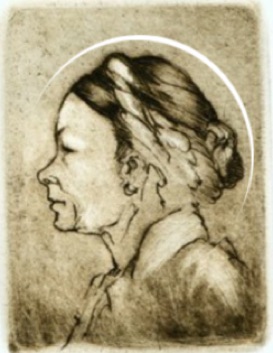
Two advanced masters in Lhasa
Orphanage nuns, who give their all for others.
So, how’s it going – this matter of eating socially now and again, but being a breatharian living exclusively from Prana, nearly all the time?
Mementa mori established throughout the age of enlightenment and particularly violent religious wars in the time of the high baroque in the 18th century remind us that:
“That which you are; we too once were.
That which we are; you too shall be.“
It may seem like science fiction, but the science is good and the evidence just keeps on piling up. Things aren’t as simple as we’ve been led to believe. Or perhaps they are, but at the level of love and caring in an essentially benign universe being universal attributes and not just limited to us.
Mayfly – Breatharian of the bug world Eephemroptera - (those that fly for a day) Mayflies shed their anal and oral apparatus with the last pre-adult instar and enter adulthood incapable of eating or defecating. They just fly, mate and die – a short life and a merry one.
In closing
